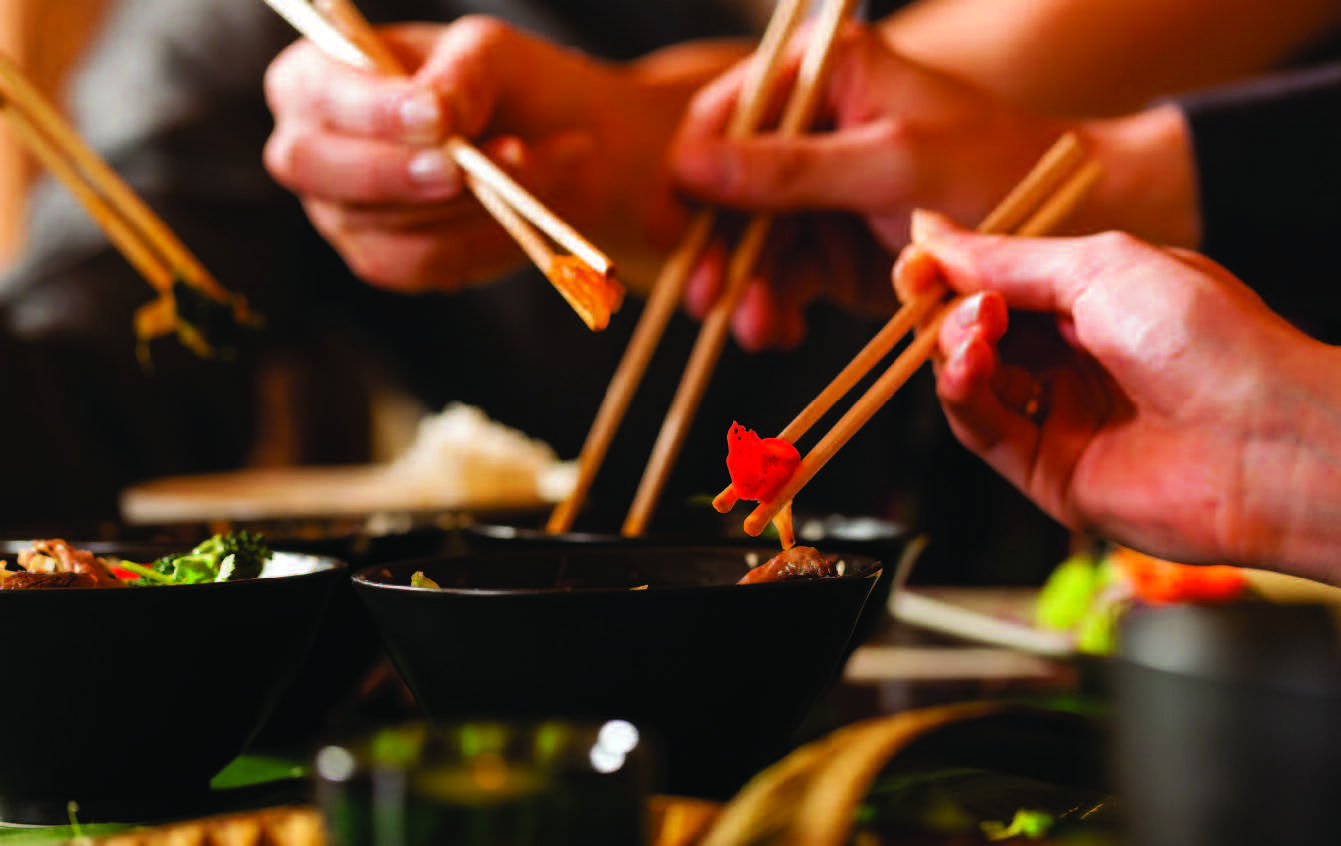EDGE takes you inside the area’s most creative kitchens.
 Paragon Tap & Table • Avocado Fillet Salad
Paragon Tap & Table • Avocado Fillet Salad
77 Central Ave. • CLARK
(732) 931-1776 • paragonnj.com
Light, fresh and local is a key factor to our Spring menu at Paragon Tap and Table. We offer a fun, seasonal, multi cultural menu which is evident in the dish. This our Avocado Fillet salad which has local frisse, tomatoes, red onion finished with Chanadal which is an indian spiced dried lentil finished with a lemon oil and fresh mango. Light, refreshing and delicious. In addition to our seasonal and locally focused menu we also are home to one of the top craft Beer programs in NJ.
— Eric B. LeVine, Chef/Partner
 Arirang Hibachi Steakhouse • Wasabi Crusted Filet Mignon
Arirang Hibachi Steakhouse • Wasabi Crusted Filet Mignon
1230 Route 22 West • MOUNTAINSIDE
(908) 518-9733 • partyonthegrill.com
We prepare a crusted 8-ounce filet mignon served with gingered spinach, shitake mushrooms, and a tempura onion ring.
 Daimatsu • Sushi Pizza
Daimatsu • Sushi Pizza
860 Mountain Ave. • MOUNTAINSIDE
(908) 233-7888 • daimatsusushibar.com
This original dish has been our signature appetizer for over 20 years. Crispy seasoned sushi rice topped with homemade spicy mayo, marinated tuna, finely chopped onion, scallion, masago caviar, and ginger. Our customers always come back wanting more.
— Chef Momo
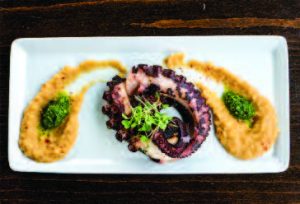 Publick House • Char Grilled Octopus
Publick House • Char Grilled Octopus
899 Mountain Ave. • MOUNTAINSIDE
(908) 233-2355 • publickhousenj.com
Our Char Grilled Octopus is becoming one of our best selling appetizers. It is braised for hours in herbs and spices until tender and then grilled to order to create a caramelized, crispy exterior. Served with a spicy chickpea puree and herbaceous pesto, the balance of textures and flavors proves to be a winning combination you don’t want to miss.
— Bernie Goncalves, Owner
 The Barge • Cioppino
The Barge • Cioppino
201 Front Street • PERTH AMBOY
(732) 442-3000 • thebarge.com
Our Cioppino, the signature dish of San Francisco, features a fresh, healthy selection of clams, mussels, shrimp, Maine lobster and Jersey scallops—drizzled in Greek virgin olive oil, with fresh garlic and white wine—over homemade Italian linguini. I know it will become one of your favorite dishes.
— Alex Vosinas Chef/Owner
 Luciano’s Ristorante & Lounge • Warm Goat Cheese Salad
Luciano’s Ristorante & Lounge • Warm Goat Cheese Salad
1579 Main Street • RAHWAY
(732) 815-1200 • lucianosristorante.com
The warm goat cheese salad with tender greens and a mulled cabernet dressing and toasted pine nuts is a signature appetizer at Luciano’s, where fresh ingredients and personable service in a beautiful Tuscan décor create a fine dining experience. Our menus are seasonally influenced to feature the best of what’s available in the market.
— Joseph Mastrella, Executive Chef/Partner
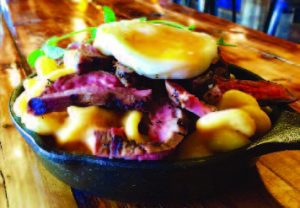 Morris Tap & Grill • Steak and Egg Mac and Cheese
Morris Tap & Grill • Steak and Egg Mac and Cheese
500 Route 10 West • RANDOLPH
(973) 891-1776 • morristapandgrill.com
We are known for innovative, local and sustainable foods, which l always make creative, fun and tasty. This twisted mac and cheese features local eggs and beef to create our Steak and Egg Mac and Cheese. In addition to our nationally recognized food (I’m a Featured Chef at the James Beard Foundation) MTG offers one of the top three Craft Beer menus in New Jersey.
— Eric B LeVine, Chef/Partner
 McLynn’s: Social Eatery and Bar • Jersey Breakfast Bar Pie
McLynn’s: Social Eatery and Bar • Jersey Breakfast Bar Pie
250 Morris Ave. • SPRINGFIELD
(973) 258-1600 • mclynns.com
Get in the Spirit! Our Jersey Breakfast Bar Pie features potatoes, Taylor ham, cheddar cheese and onions. It doesn’t get more Jersey than that!
— Mark Houlker, Chef
 Arirang Hibachi Steakhouse • Volcano Roll
Arirang Hibachi Steakhouse • Volcano Roll
23A Nelson Avenue • STATEN ISLAND, NY
(718) 966-9600 • partyonthegrill.com
Hot-out-of-the-oven, crab, avocado and cream cheese rolled up and topped with a mild spicy scallop salad.
 Galloping Hill Caterers
Galloping Hill Caterers
Galloping Hill Road and Chestnut Street • UNION
(908) 686-2683 • gallopinghillcaterers.com
Galloping Hill Caterers has been an incredible landmark for nearly sixty years. We pride ourselves in delivering “over the top” cuisine, impeccable service and outstanding attention to detail. That is the hallmark of our success! Simply, an unforgettable experience. Pictured here is one of our crepes flambé that really creates lots of excitement!
— George Thomas, Owner
 Vine Ripe Markets
Vine Ripe Markets
430 North Avenue East • WESTFIELD
(908) 233-2424 • vineripemarkets.com
Summer cooking should be filled with easy to make, flavorful recipes. Grab your favorite shellfish, (i.e, lobster, clams, mussels or shrimp), add them to an aluminum tray with cherry tomatoes, red onion, corn, garlic, butter and a bottle of pinot grigio. Cover it tight and throw it on the grill! IT’S THAT SIMPLE! TIP: Cut a loaf of Italian bread in half, smother w. fresh garlic and butter then add to your grill for 5 minutes to get a nice crusty bread to dip in the broth!
— Frank Bruno, Chief Culinary Officer
Do you own a local restaurant and want to know how your BEST DISH could be featured
in our Chef Recommends restaurant guide?
Call us at 908.994.5138
A new book shines a light on women in the post-Civil War era.
By Mark Stewart
History is written by the victors, philosopher Walter Benjamin once observed. Why then, Joanne Rajoppi wondered, had no one told the story of northern women in the wake of the Civil War. Rajoppi, whose day job as Union County Clerk gives her a unique appreciation for the power of documents, knew where to find this story: in personal correspondence scattered throughout the country. The result of her three-year research journey is Northern Women in the Aftermath of the Civil War: The Wives and Daughters of the Brunswick Boys, published by American History Press.
Rajoppi’s foray into 19th century cultural history began with her previous book, New Brunswick and the Civil War: The Brunswick Boys in the Great Rebellion.

www.istockphoto.com
“It was based on the 110 letters my great-grandfather wrote home to his mother and sisters,” Rajoppi says. “It told the story of what was happening to him and to his family. After that, I wondered what happened to the women in the North. Many husbands didn’t come home, or came home broken injured. Unless you were wealthy or had an extended family, you could be in a lot of trouble.”
Rajoppi points out that there is plenty of literature on Southern women in the post-Civil War years, but remarkably little on their Northern counterparts. Women’s history from this period in general, she adds, isn’t very well documented.
“How did women survive? There were no social services,” Rajoppi points out. “My own great-grandmother lost her youngest son in the Civil War and her husband soon after, and was left to care for two daughters, one of whom was epileptic.”
To write Northern Women in the Aftermath of the Civil War, Rajoppi often had to get to the women’s stories by navigating through the men. She never imagined how difficult the research would be, or how far it would take her—both intellectually and geographically. She ended up pouring through archives far afield from New Jersey, with stops in Detroit, Seattle and Los Angeles
“After the war many people moved west, including part of my family,” she explains.
The writing, Rajoppi says, was the easy part. The research required far more tenacity. The bonus for all the hard work was a deeper understanding of day-to-day challenges and occasional opportunities for women in the second half of the 19th century. The invention of the typewriter, for example, had a huge impact
“It triggered a substantial change in education,” Rajoppi says. “High school teaching suddenly had a ‘commercial’ track. Middle- and working-class women now had the option to develop office skills, which paid more than factory and domestic work. Office workers made more than most teachers, too.”
Rajoppi says she was also struck by how quickly people died before the development of antibiotics and modern medicine. The poor treatment of the mentally ill hit particularly close to home. For more than a decade after the Civil War, epilepsy was categorized and treated as a form of insanity; some patients were “treated” by being chained. A criminal misunderstanding of mental illness persisted into the 20th century she says, citing the experience of her own grandmother.
“In 1921, she had a breakdown after her husband died and was sent to the New Jersey Lunatic Asylum in Trenton,” Rajoppi says. “The director of the hospital believed that insanity was caused by diseased organs, so he removed them. My grandmother was subjected to an intestinal operation and died within two weeks of sepsis.”
Anyone poking around in family history is likely to meander down some fascinating paths. Rajoppi is quick to add that there were numerous high points in her research—much of it making it into the book, but some of it not. Her favorite research gem?
“I found out my family came over a year after the Mayflower!”
Editor’s Note: Joanne Rajoppi is a trustee of the Union County Historical Society. Her latest book is available for$21.95 online and in stores.
America is often characterized as a nation of immigrants. That makes New Jersey America on steroids.
By Mark Stewart
As much as any state in the nation over the past three-plus centuries, New Jersey has been defined culturally, socially, politically and economically by its newcomers. Decade after decade, our stunning diversity has supplied vital muscle and spirit to the state’s industrial, intellectual and artistic progress. Granted, things haven’t always gone smoothly—it is something of an American tradition to dump on the people who arrived in the U.S. right after you—but by and large, New Jersey has done a sensational job of absorbing its newcomers and leveraging their strengths.
For all its faults and inefficiencies, the odd collection of 500-plus towns and cities that make up the Garden State has enabled every group of newcomers to gain an initial foothold and quickly begin to realize their potential. If anything, that is more true today than at any other time in our history—including the historic mass migration during the late-1800s and early-1900s.
Who are we? How did we get here? In order to know where we are going, it’s helpful to understand where we’ve been.
COLONIAL TIMES
New Jersey at the dawn of the Colonial Era was home to Dutch and Norwegian settlers. In 1638, Swedish and Finnish farmers began carving out space on both sides of the Delaware River, calling their settlement New Sweden. These were hardly gentleman farmers—many, in fact, had been banished from their homelands, with some presented with a choice between exile and the gallows. The Dutch focused their energies along the Hudson River, but their initial attempts at establishing settlements across the water from New Amsterdam (aka Manhattan), were thwarted by hostile natives. Not until 1660 did Dutch farmers gain a permanent foothold in New Jersey, on a rise between the Hudson and Hackensack Rivers in present-day Jersey City.

Upper Case Editorial
By then, the Dutch were no longer calling the shots. In 1644, a quartet of English warships sailed into New York harbor and wrested control from the Dutch. It was a bloodless takeover; the Dutch were traders not warriors and were content to continue plying their trade under a British flag. As every New Jersey school kid learns (but you probably forgot), the crown transferred ownership to George Carteret and John Berkeley (above). They in turn sold off chunks of land and issued the Concessions of Agreement, which included an elected assembly, unfettered trade and freedom of religion (as long as the religion was Protestant).

Upper Case Editorial
The relative freedom afforded by the Concessions of Agreement produced the desired effect: Settlers began pouring into the provinces of East Jersey and West Jersey, as the colony was known. Interestingly, the vast majority of newcomers were not from across the Atlantic, but from New England and Long Island, where the rules regarding government and religion were more constrictive. In 1664, Long Islanders established Elizabethtown and in 1664 refugees from Connecticut founded Newark. In the west, William Penn and the Quakers, who were persecuted in England, settled in Burlington. In New Jersey’s interior, Dutch settlers from the Hudson Valley built vast farms, worked by indentured servants and African slaves. For nearly a century, visitors to New Jersey were more likely to hear Dutch spoken than English.
In 1702, East and West Jersey became New Jersey. The population at that time was around 15,000, with 10,000 people living in the eastern portion of the colony. By the time of the American Revolution, New Jersey’s population exploded, increasing more than tenfold. The boom was a combination of factors. People continued to migrate south from New England and New York. The colony’s fertile soil and plentiful resources triggered a spike in the birth rate. And transatlantic immigration had begun in full force. Scots-Irish (Protestants from Ireland whose recent ancestors had moved from Scotland) and Germans were the two biggest groups. Most of the German settlers continued on to Pennsylvania, where they maintained their culture as the “Pennsylvania Dutch” (Deutsch is actually the word—they aren’t Dutch at all).
EARLY STATEHOOD
At the conclusion of the 18th century, at the dawn of its statehood, roughly seven in 10 New Jerseyans traced their heritage back to the British Isles, with the rest split between Dutch and Germans. Those demographics would change over the next century, but not as rapidly as one might assume. Although America in the early 1800s was a magnet for immigration. New Jersey’s population growth between 1790 and 1840 actually lagged behind neighboring states. Indeed, thousands of newcomers bypassed New Jersey and struck out for more promising farmland along the expanding frontier; most of the prime farmland in New Jersey was already under cultivation. New York and Philadelphia also attracted immigrants who might have settled in New Jersey. In addition, countless New Jerseyans seeking entrepreneurial opportunities during this period moved from rural areas to these major cities.
Even so, New Jersey’s population more than doubled between the Revolution and Civil War. A very high percentage of that increase was “natural” or “internal”—the result of established, growing families. This contributed to a curious dynamic: People in New Jersey began to think of themselves as “native” Americans instead of transplanted Europeans. Unfortunately, his would make life extremely difficult for the next group of immigrants from across the Atlantic.
Economic and political shifts in Europe during the Industrial Revolution drove many people to the United States in the mid-1800s. Those coming from England and Germany tended to be skilled and, often, educated workers who found immediate employment in New Jersey’s growing cities. The outlook for Irish immigrants arriving in America was not as bright. They tended to be unskilled laborers or tenant farmers driven overseas by starvation after a potato blight wiped out their primary source of food in the 1840s. They arrived penniless and unwanted.


Library of Congress
New Irish immigrants often lived in urban squalor, with nearly two-thirds qualifying by modern terminology as “working poor.” Irish men found work only as day laborers. Women between adolescence and marriage fared better as domestic help, and were often the primary breadwinners for their families. This was especially true in New Jersey, where the Irish made up fully half of the state’s new immigrants in the mid-1800s. The impact of the Irish and other new New Jerseyans was profound. They fueled the rapid growth of the state’s industrial centers and swelled the population, particularly in Hudson, Essex and Passaic Counties.
The contributions of New Jersey’s 19th century immigrants went largely unrecognized at the time. America the Melting Pot may have been celebrated as a

www.istockphoto.com
model to the world in the 20th century. In the 19th century, however, few saw the value of a diverse society. In New Jersey, those who viewed themselves as “native born” controlled politics and business, and they wielded this power mercilessly. They also looked down on the state’s new arrivals for the way they enjoyed the country’s promise of freedom of religion. American Protestants in the early 1800s were extremely conservative. In New Jersey, they frowned upon the newcomers’ Sunday activities. After a 60-hour workweek, Europeans were not inclined to devote their off-day to quiet, dignified reflection. They wanted to have fun, picnic, play sports. They overran parks and public spaces, drawing the ire of Protestant groups.
The Irish suffered doubly for their Catholicism. Their loyalty to the United States was constantly questioned because of their fealty to the Pope. Also, a general distrust of Catholicism as being anti-democratic was pervasive in America at this time. The curriculum of New Jersey’s public schools in the pre-Civil War era tilted heavily toward Protestant teaching, to the point where some educators hoped to convert Catholic children. Not surprisingly, it was around this time when Catholic schools began popping up all over the state. Catholic families pulled their kids out of the public schools and also demanded that the state fund these parochial institutions with their tax dollars. Friction between Protestants and Catholics occasionally erupted into violence in New Jersey’s cities. In Newark, a procession of Irish Protestant societies marched into an Irish Catholic neighborhood and a full-fledged riot ensued.
One thing that Irish immigrants brought from their homeland that served them well was their ability to organize against an oppressor. In Ireland, they defied British rule. In American cities, as Irish populations swelled (and created huge voting blocks) their leaders found opportunities in controlling local politics and, by extension, exerting their influence on labor organizations and municipal jobs, including police forces. By the end of the 1800s, their children and children’s children would come to think of themselves as the native New Jerseyans, but in a different way. Although the Irish were no longer newcomers, they remained keenly aware of the distinct aspects of their culture, and proud of them. Each immigrant group that subsequently arrived in the Garden State followed their example, contributing to New Jersey’s diverse cultural tableau.
THE FLOODGATES OPEN
The final decades of the 19th century saw an astonishing uptick in immigration. Greater stability in Western Europe stemmed the tide from England, Ireland and Germany. Now the “new” immigrants came from Eastern and Southern Europe—primarily Italy, Poland, Russia and Hungary. They were characterized as the dregs of Europe: unsophisticated, uneducated and incapable of contributing to a society where they didn’t even speak the language. The reality, of course, was far different. The so-called “great unwashed” and “huddled masses” actually tended to be young, healthy and ambitious. Many young men came to America alone, hoping to secure jobs that would enable them to bring their families over, or at least return home with money in their pockets. These immigrants ended up propelling the Industrial Revolution in the U.S. to new heights with their minds and bodies, contributing to a wide array of industries and making game-changing contributions to science and the arts.
Between 1880 and 1930, thanks largely to the inflow of European immigrants, New Jersey’s population nearly quadrupled, from just over one million to four million. Jersey City, Camden, Trenton and Newark became thriving urban centers during this time, while cities such as Paterson, Passaic and Elizabeth reached the height of their commercial power. The consumer culture that blossomed in America in the early 1900s was no more evident than in Newark, where retail space on Market and Broad Streets fetched higher rents than on Fifth Avenue in New York City. Tunnels, bridges and modern ports, built by recent immigrants—along with the children and grandchildren of immigrants—provided vital links to the rest of the country.
The experience of New Jersey’s first Italian immigrants differed somewhat from that of the Irish. It’s worth noting because today the number of New Jerseyans who claim Italian or Irish heritage is roughly equal. (The exact figures depend on who’s doing the counting, and what criteria they employ, but from a purely empirical standpoint it seems about right.) Thousands of Italian immigrants found employment in New Jersey’s agricultural sector. In South Jersey, near the Pinelands, where the land can be extremely uncooperative, Italian farmers—renowned for their ability to coax produce from sketchy soil—were actively recruited from remote villages. Agents sent to Southern Italy and Sicily by New Jersey land investors posted bills that promised free passage and 20 acres of land for strong men willing to farm their plots. Grapes grew particularly well in the area, which was eventually renamed Vineland.
Most Italian immigrants to New Jersey settled in its urban areas, arriving in especially large numbers in the first two decades of the 20th century. In many cases, they “replaced” the Irish as the go-to day laborers, particularly in railroad and housing construction. Italian women, as a rule, did not work outside the home as domestics. They were more likely to contribute financially by doing piecework out of their homes. Few Italians spoke English when they arrived. They dealt with this disadvantage by establishing self-sufficient neighborhoods in cities like Newark, where Italian was the common tongue in the First Ward for decades. Within these neighborhoods were clusters of Italian families from specific villages, with their own patron saints and annual festivals.
Immigrants from Eastern Europe often gravitated to the cities of Passaic and Paterson. At the turn of the 20th century they were home to dozens of enormous textile operations. Laborers from Russia, Poland and Hungary found steady employment in these businesses. They were paid poorly by mill owners and lived in crowded, dirty conditions. In 1920, Passaic might have been the nation’s most “foreign” city—85 percent of its population was either born outside the U.S. or were children of immigrants. In the crowded First Ward, only 1 in 100 residents could claim to be a “native” New Jerseyan.
A SENSE OF IDENTITY
Today. we often use terms like Italian-American, Irish-American and German-American out of cultural recognition or sensitivity. A century ago, these terms would actually have been more appropriate. Immigrants arriving in New Jersey did not come to “be Americans.” They came to be Italians in America or Irish in America or German in America. A national identity (in the modern sense) would not be truly galvanized until World War II. Indeed, when World War I began in 1914, New Jersey’s multi-ethnic makeup created some tricky issues. Irish-Americans, for instance, were critical of the U.S. government’s support of England. German-Americans and immigrants from Austria-Hungary tended to root for their countries of origin in the early days of the war. They were not anti-American per se, but their loyalties were certainly divided—particularly in 1914, when it was assumed that the fighting would end soon.
Not surprisingly, once the U.S. was drawn into the war against Germany in 1917, German-Americans in New Jersey found themselves the target of hatred and suspicion. Hundreds were rounded up, often on the slimmest of pretenses, suspected of being saboteurs or enemy agents.
Starting in the 1920s, the federal government put the clamps on mass immigration. What had been a flood became little more than a trickle. Restrictions and quotas during this time tended to favor Northern Europeans. With the exception of refugees following World War II, it was unusual to come across a “recent immigrant” in New Jersey. As a result, what had been distinct cultures slowly became Americanized, with traditions (and family names) handed down to children and grandchildren. By the 1960s, the only people with deep “accents” were probably 50 yeas old or older.

Library of Congress
THE IMMIGRATION AND NATIONALITY ACT OF 1965
In the last 50 years, the majority of new New Jerseyans have come from Spanish-speaking countries and from Asia. In 1965, Congress passed sweeping immigration reforms that struck down the restrictive quota system that had been in place since the 1920s. The new rules gave preference to people who already had family members residing in the U.S., and to skilled laborers. In the ensuing decades, political upheaval in Latin America and a lack of economic opportunities in Asia sparked an explosion of “kin-based migration chains” from these regions of the world. At the same time, Europe had completed its recovery from World War II, so there was little incentive for Europeans to seek American citizenship. These two demographic trends combined to change the face of America—and particularly New Jersey.
Because of its long history of cultural diversity, its economic opportunities and its proximity to major cities, New Jersey proved to be a particularly popular landing spot for immigrants from Asia and Latin America. The state’s current population of roughly 9 million represents 2.8% of the U.S. population, yet upwards of 6% of the country’s new immigrants settle here. That percentage may be even higher when undocumented individuals are taken into account.
New Jersey’s Asian population grew steadily in the 1970s and 1980s to more than 250,000. From 1990 to 2000 it jumped dramatically, by nearly 100 percent. The largest groups were made up of immigrants from India, followed by China and the Philippines. Today, there are significant Indian populations in the towns of Edison and Iselin, as well as in Jersey City, which has the largest Indian population in the state, estimated at over 25,000. At 10.9% of the city’s total population, it is the most ethnically Indian of any major city in the country. “Little India” along Newark Avenue is home to Hindu temples, Indian restaurants and grocery stores, and the site of numerous celebrations, including the Navratri festival each autumn.
New Jersey’s Korean population is centered around Palisades Park in Bergen County, including the neighboring towns of Fort Lee, Leonia and Tenafly. In the 1970s and 1980s, the first wave of immigrants included a high percentage of famously hardworking but unskilled laborers. Over the last quarter-century, the socioeconomic and educational profile of Korean immigrants to New Jersey has risen dramatically.
There are some really interesting demographics out there on other Asian-American groups in New Jersey, particularly those claiming Chinese and Filipino heritage. However, taking a deep dive into those numbers can be tricky. The last U.S. census was in 2010, so the most accurate statistics on who New Jerseyans are and where they live are a mish-mash of seven-year-old census records and data collected by various studies—some by academics and others by state agencies like the New Jersey Department of Labor. Which is to say they are inherently inaccurate. It will be fascinating to see how rapidly the state’s demographics have shifted when the 2020 census results come out. Much of the data collection will be done via the Internet, which adds an additional wrinkle to the process. What can be said with some certainty at this point about

Photo by LuigiNovi Nightscream
New Jersey’s Asian population is that—
as a percentage of the overall population—it ranks third in the nation behind Hawaii and California.
Americans of Asian descent number roughly 20 million, making up around 6% of the U.S. population. In New Jersey, the percentage is around 10%.
LATINO NEW JERSEY
Historically, the state’s Latino Hispanic communities tend to form in its urban centers. They make up the majority of residents in seven cities of 25,000 or more: Fairview, Paterson, Elizabeth, North Bergen, Dover, Passaic, Perth Amboy, West New York and Union City. In Perth Amboy, West New York and Union City, more than three in four residents is Latino. Although one tends to think of Spanish-speaking communities as heavily immigrant, the fact is that roughly three in five Latinos living in the state were born in the United States.
Starting in the 1950s, New Jersey’s Cuban population—many from Fomento and Villa Clara in central Cuba—coalesced around Union City. The Cuban population spread north and south in the ensuing decades and, today, some call this stretch of waterfront “Havana on the Hudson.” Another New Jersey city that became a landing place for immigrants from a specific country is Paterson, which has seen its Peruvian population grow dramatically. The city’s downtown area has been called “Little Lima” or “Little Peru.” Old-timers recall that this neighborhood had once been nicknamed “Dublin” for its heavy Irish population and the line of mills along the Passaic River—and then “Little Italy,” after another wave of European immigrants arrived. Paterson’s Main Street still boasts a Little Italy section, as well as distinct Dominican, Puerto Rican, and Mexican neighborhoods.
New Jersey’s Mexican population has experienced stunning growth. In little more than a generation (since 1990) it has increased more than 800 percent, from around 30,000 to more than a quarter-million. Overall, the Hispanic population in New Jersey grew by two-and-half times during the same period. Mexicans now represent the second-largest Hispanic population in the state, behind Puerto Ricans and just ahead of Dominicans, who make up the largest group from a Caribbean nation. That being said, New Jersey is home to more than 450,000 people who trace their heritage to Puerto Rico. Only New York and Florida have larger Puerto Rican populations. For most of the 20th century, Puerto Rican communities were concentrated in the urban centers of Hudson and Essex Counties, including Newark, Elizabeth and Jersey City. Large Puerto Communities are now located in Paterson, Camden, Trenton, Vineland and Perth Amboy. Puerto Rican migration to the U.S. began in the 1920s, but it wasn’t until the 1950s and 1960s that New Jersey became a popular destination.
Which part of the world will send New Jersey its next “wave” of newcomers? With the world’s climate changing, food stress may serve as the trigger. History teaches us that people are often willing to live in fear of war or violence, but nothing moves populations like the fear of starvation. That makes parts of Africa and the Middle East prime candidates. Alas, once thing is certain: Whoever has the fortitude, ambition and luck to make it to America, they can count on finding a Welcome mat in the Garden State.
JEWS IN NEW JERSEY
 Like most newcomers to the state, Jewish immigrants created insulated communities within New Jersey’s cities, specifically Newark, Paterson and Camden. The Weequahic section of Newark—a city that at one time claimed more than 75,000 Jewish residents—was perhaps the state’s most famous. The initial wave of Jewish immigrants were German Jews during the mid-1800s. They were extremely influential in the state’s economic growth. At the turn of the century, Jewish immigrants were more likely to come from Russia, Poland and other parts of Eastern Europe, where they were victims of persecution. In the years after World War II, Jewish families that could afford to move to the Garden State’s rapidly expanding suburbs did so.Today, New Jersey’s Jewish populations are predominantly located in suburbs, as opposed to urban centers or “exurbs.” Today there are approximately 550,000 Jews living in New Jersey. The Ocean County town of Lakewood is home to one of the nation’s largest Orthodox communities, which makes up more than half of Lakewood’s population. Beth Medrash Govoha, one of the world’s most heralded rabbinical colleges, is located in the town.
Like most newcomers to the state, Jewish immigrants created insulated communities within New Jersey’s cities, specifically Newark, Paterson and Camden. The Weequahic section of Newark—a city that at one time claimed more than 75,000 Jewish residents—was perhaps the state’s most famous. The initial wave of Jewish immigrants were German Jews during the mid-1800s. They were extremely influential in the state’s economic growth. At the turn of the century, Jewish immigrants were more likely to come from Russia, Poland and other parts of Eastern Europe, where they were victims of persecution. In the years after World War II, Jewish families that could afford to move to the Garden State’s rapidly expanding suburbs did so.Today, New Jersey’s Jewish populations are predominantly located in suburbs, as opposed to urban centers or “exurbs.” Today there are approximately 550,000 Jews living in New Jersey. The Ocean County town of Lakewood is home to one of the nation’s largest Orthodox communities, which makes up more than half of Lakewood’s population. Beth Medrash Govoha, one of the world’s most heralded rabbinical colleges, is located in the town.
 THE BLACK EXPERIENCE
THE BLACK EXPERIENCE
African-Americans were among the earliest settlers in New Jersey, although often they had no say in the matter. They were imported as slave labor from Africa or the West Indies by the Dutch and the English. Perth Amboy and Camden were major ports of entry for the trade. While New Jersey had a significant population of “free blacks” in the 1700s, at the time of the American Revolution there were more than 10,000 slaves in the state. The vast majority labored on farms or in ports, which were New Jersey’s two major industries. That explains why it took the state legislature until 1804 to outlaw slavery—and then only gradually. For decades after, many children born to New Jersey slaves were classified as “apprentices” to the owners of their parents into their 20s and beyond. Not until the 13th Amendment was passed in 1865 were the final 16 African-Americans still serving “apprenticeships” legally free.
New Jersey’s African-American population did not undergo significant growth until World War I, when demand for industrial laborers in the urbanized North and Midwest triggered the “Great Migration” of more than 1.5 million blacks from the rural South between 1916 and 1930. A second wave estimated at nearly 5 million left the South for the North, West and Midwest in the quarter-century after World War II.
Today, African-Americans make up the majority of residents in six cities of 25,000 or more: Newark, Camden, East Orange, Irvington, Willingboro and Orange. There are also large numbers of African-American families in Jersey City, Trenton, Paterson, Plainfield, Passaic and Lakewood. About 1.2 million people in New Jersey identify themselves as “black” or African-American.
We welcome the community to our programs that are designed to educate and inform. Programs are subject to change.
SEMINARS
Seminars, unless otherwise noted, will be held at the CORE Building, 1164 Elizabeth Ave., Elizabeth, NJ
(Enter parking lot from South Broad St., next to Fire House) Register online or call (908) 994-8939.
THURSDAY, JUNE 8 • 5:30 pm
How Safe is Your Home?
There are different methods to keep your home safe including security systems and fire alarms. Find out what your options are and see what’s right for you.
Diana Youssef and Krystle Rodriguez, Neighborhood Revitalization Coordinators, Habitat of Humanity
Register at www.TrinitasRMC.org/HomeSafety
THURSDAY, JUNE 15 • 5:30 pm
Alzheimer’s Diseases: Life after Diagnosis
Learning to cope with this diagnosis is a process. Join these experts as they discuss exercises, activities, and other means of support that can be integrated into your treatment plan. Caregivers and family members are welcome.
Tim Clyne, BA, MSN, RN, CDP, Nurse Manager, HELP Program; Diane Reehil, MSN, GNP, CNN, Clinical Nurse Specialist, HELP Program; Johanna Thomas, BA, CDP, Elder Life Intervention Clinician, HELP Program
Register at www.TrinitasRMC.org/AlzheimersAwareness
WEDNESDAY, JULY 5 & JULY 12 WEDNESDAY, SEPT. 6 & SEPT. 13
AARP Driver Safety Classroom Course
Earn a 5%-10% discount on auto insurance or two points deducted from your driving record. Two classes must be taken consecutively in order to gain credit for the class.
$15 for AARP members (must bring card for validation)
$20 for Non AARP members
Must bring a valid driver’s license.
Space is limited and registration is required.
Call 908-994-8939 to register.
TCCC SUPPORT GROUPS
Conference Room A or Conference Room B
Trinitas Comprehensive Cancer Center
225 Williamson Street, Elizabeth New Jersey 07207
All events take place from 1pm to 3pm.
Call (908) 994-8535 for 2017 schedule.
Living with Cancer
Viviendo con Cáncer, Grupo De Apoyo
Living with Breast Cancer
Viviendo con Cáncer de Mama
Caregiving Support Group
Viviendo con Cáncer, Grupo De Apoyo
Viviendo con Cáncer, Apoyo Familiar
For more information on any TCCC support programs and to RSVP, please contact Roxanne Ruiz-Adams, LSW, (908) 994-8535. Por favor llame al (908) 994-8535 para confirmar su asistencia.
TRINITAS HEALTH FOUNDATION EVENTS
THURSDAY, JUNE 22 • 8:00 am
9th Annual Andrew H. Campbell Sporting Clays Tournament
Hudson Farm Club, Andover, NJ
MONDAY, SEPTEMBER 25
Annual Golf Classic & Spa Day
Echo Lake Country Club, Westfield, NJ
For more information about the Foundation or to learn more about its fundraising events, (908) 994-8249 or nbrechner@trinitas.org.
Proceeds from these and other events benefit the patients of Trinitas Regional Medical Center. Making reservations for Foundation events is fast and easy on your American Express, MasterCard, Visa or Discover card!
SPECIAL PROGRAMS
Health Services with Women In Mind
Trinitas helps provide women access to vital health services with a focus on preventive measures. These include educational programs and cancer screenings. Programs offered in English and Spanish.
To learn more about these services, contact Amparo Aguirre, (908) 994-8244 or at amaguirre@trinitas.org
Ask the Pharmacist: Medication Management
Free of charge, by appointment only.
Monthly on the 4th Tuesday, 11:30 am – 1:00 pm
Call (908) 994-5237
MEDICAL AND BEHAVIORAL HEALTH SUPPORT GROUPS
Diabetes Management Support Group
Monthly, First Monday, 2:00 – 3:00 pm
Kathleen McCarthy, RN, CDE (Certified Diabetes Educator)
Open to both diabetics and non-diabetics who want to learn more about diabetes prevention.
65 Jefferson Street, 2nd Floor, Elizabeth, New Jersey Call (908) 994-5502 for further information or registration
Sleep Disorders
If you or someone you know experiences problems sleeping, consider contacting the Trinitas Comprehensive Sleep Disorders Center in Elizabeth. Another location can be found in Cranford at Homewood Suites by Hilton with easy access on and off the Garden State Parkway. Both centers are headed by a medical director who is board certified in sleep medicine, internal medicine, pulmonary medicine, and intensive care medicine, and is staffed by seven certified sleep technologists.
For further information, call (908) 994-8694 to learn more about the Trinitas Comprehensive Sleep Disorders Center or visit www.njsleepdisorderscenter.org
Narcotics Anonymous
Monday 7:00 – 8:30 pm
Sunday 12:00 noon – 2:00 pm; Sunday 5:00 – 6:30 pm
Jean Grady, Community Liaison, (908) 994-7438 Grassmann Hall, 655 East Jersey St., Elizabeth
Alcoholics Anonymous
Friday 7:30 pm – 8:45 pm
Jean Grady, Community Liaison, (908) 994-7438 Grassmann Hall, 655 East Jersey St., Elizabeth
HIV Education and Support Program for HIV Positive Patients
Monthly. Call for scheduled dates/times.
Judy Lacinak, (908) 994-7605
Early Intervention Program Clinic, 655 Livingston St. Monastery Building, 2nd Floor, Elizabeth
Mental Illness Support Group (NAMI) for Spanish Speaking Participants
4th Friday of each month except August, 6:30 pm – 8:30 pm Mike Guglielmino, (908) 994-7275
Martha Silva, NAMI 1-888-803-3413
6 South Conference Room, Williamson Street Campus 225 Williamson Street, Elizabeth
TRINITAS CHILDREN’S THERAPY SERVICES
899 Mountain Avenue, Suite 1A, Springfield, NJ • (973) 218-6394
“10 Tips…” Workshops
Come take part in the 7th year of our highly successful Ten Tips Workshop Series. The series is for parents, teachers, or other individuals who work with young children and focus on practical strategies that can be easily implemented into daily classroom and/or home routines. All of our workshops offer suggestions that are appropriate for all children with an emphasis placed on children with special needs and those who may be on the Autism Spectrum.
All workshops take place at the Trinitas Children’s Therapy Services Center, 899 Mountain Ave, Suite 1A, Springfield NJ. Workshops are $15 each.
June 13, 2017 6:00 pm – 7:30 pm
10 Tips for Building Gross Motor Skills
into Large Group Activities
For more information or to register for this last workshops, please contact Christine German, OTD, OTR, at (973) 218-6394, ext. 4012, or email CGerman@trinitas.org
Summer Programs:
July 5-August 18
All programs are offered one time per week, for 45 minutes at Trinitas Children’s Therapy Services,
899 Mountain Avenue, Suite 1A, Springfield, NJ 07081
These programs and/or group therapy sessions are a great alternative to individual therapy. They give children the opportunity to address key developmental areas
in structured but busier environments that are more reflective of typical real-life home and school situations. Classes are grouped by skill and age level.
Scribbles to Script
Children from preschool (prewriting) through elementary school (cursive) have the opportunity to use the Handwrit-ing Without Tears program to learn pre-writing skills, proper letter formation, and writing within the given lines. Multi-sensory fine motor, visual-motor, and visual-perceptual activities help to reinforce learning and make writing fun! 45-minute classes held once weekly.
Sports 1 Step at a Time
Children between the ages of 4 & 12 will have the opportunity to work with a PT to refine their skill set for several sports, including soccer, basketball, and kickball, in a non-competitive group setting. 45-minute sessions held once weekly.
Lil Group, Mondays 4:00 – 4:45
Biggie Group, Mondays 5:00 – 5:45
Typing Whiz Kids
Children from 1st grade through middle school will participate in functional tasks that will allow them to learn efficient keyboarding/typing skills. From key location and finger placement, to speed and accuracy children will learn this valuable skill the correct way while working with an OT. 45-minute sessions held once weekly.
Lil Group, Tuesdays 4:00 – 4:45
Biggie Group, Tuesdays 5:00 – 5:45
Social Butterflies
Children between the ages of 4 & 12 have the opportunity to become social butterflies by engaging in fun non-challenging therapeutic activities overseen by a speech & language pathologist. Skills taught include turn taking, topic maintenance, appropriate question asking, following non-verbal cues, and using manners. 45-minute sessions held once weekly.
Lil Group, Wednesdays 4:00 – 4:45
Biggie Group, Wednesdays 5:00 – 5:45
Learn to Ride Bike Riding Lessons
Children will learn this vital childhood skill in a non-competitive environment with a highly trained therapist. Sessions are run in 60-minute periods of time. Dates and times can be organized to the client’s availability. Call to schedule.
(Children require 1 – 3, 60 min sessions)
7th Annual Camp Trinitas
Now accepting registrations for Summer 2017
The program is the perfect opportunity to have children gain new skills or maintain recently-learned motor and academic skills without a full day or even full week commit-ment. Sign up for as many days or weeks as you would like. Sign up for a ½ day or a full day.
We will now be located off-site, with a classroom, an outdoor space, a playground, a kitchen, and a larger gym area! We will now be offering the option of either a ½ day or a full day!Allow your child to participate in a camp directly organized and supervised by skilled clinicians in their respective fields. Camp Trinitas is run by OT’s, PT’s, speech therapists, and ABA clinicians, to address each child’s specific needs. Monday thru Friday 8:30 – 4:00
½ Day OR Full Day
To register for any programs or for more information, please contact Kevin Nelson at knelson@trinitas.org,(973) 218-6394, ext. 13, or fax (973) 218-6351.
To learn more, visit www.childtherapynj.com
This page is sponsored by
Elizabethtown Healthcare Foundation
Inspired to Care, Inspired to Give
TRINITAS HEALTH FOUNDATION HONORS HEALTHCARE HEROES

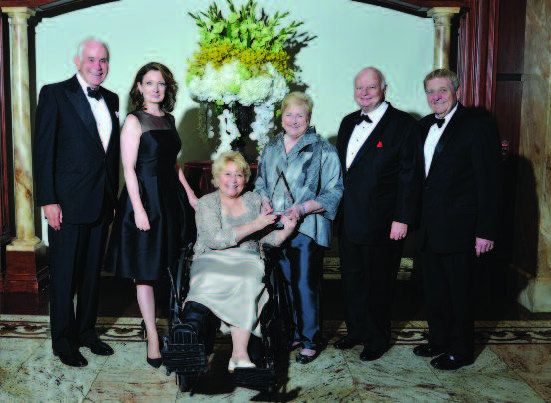 Hundreds of Trinitas friends and donors danced the night away at the Champions of Care Gala on Thursday, May 4th at The Venetian in Garfield, NJ. This beautiful black tie event honored Connie Dwyer with the Humanitarian Award and Quest Diagnostics with the Celebrating Philanthropy Award, and raised over $400,000 to benefit the patients of Trinitas! Join us next year! Please contact Joanne McGann at (908) 994-8249 for information about Trinitas fundraising events. Photo to left: From left to right: Bob Dwyer, Catherine Flynn, Esq. (Chair, Trinitas Health Foundation Board of Directors), Nadine Brechner (Chief Development Officer), Honoree Connie Dwyer (Founder, Connie Dwyer Breast Cancer Foundation), Gary Horan (President & CEO, Trinitas Health & RMC), Victor Richel (Chairman, Trinitas Health & RMC Board). Photo to Right: The Quest Diagnostics Team posed with Trinitas’ very own Stephen Bonventre, Trustee (Trinitas Health Foundation), Catherine Flynn, Nadine Brechner, and Gary Horan. To the right of Horan, Stuart Paul, General Manager for the East Region of Quest Diagnostics was the Gala award recipient!
Hundreds of Trinitas friends and donors danced the night away at the Champions of Care Gala on Thursday, May 4th at The Venetian in Garfield, NJ. This beautiful black tie event honored Connie Dwyer with the Humanitarian Award and Quest Diagnostics with the Celebrating Philanthropy Award, and raised over $400,000 to benefit the patients of Trinitas! Join us next year! Please contact Joanne McGann at (908) 994-8249 for information about Trinitas fundraising events. Photo to left: From left to right: Bob Dwyer, Catherine Flynn, Esq. (Chair, Trinitas Health Foundation Board of Directors), Nadine Brechner (Chief Development Officer), Honoree Connie Dwyer (Founder, Connie Dwyer Breast Cancer Foundation), Gary Horan (President & CEO, Trinitas Health & RMC), Victor Richel (Chairman, Trinitas Health & RMC Board). Photo to Right: The Quest Diagnostics Team posed with Trinitas’ very own Stephen Bonventre, Trustee (Trinitas Health Foundation), Catherine Flynn, Nadine Brechner, and Gary Horan. To the right of Horan, Stuart Paul, General Manager for the East Region of Quest Diagnostics was the Gala award recipient!
 IT’S “GAME ON” AT THE JUNE 2017 CLAY SHOOT
IT’S “GAME ON” AT THE JUNE 2017 CLAY SHOOT
The 9th Annual Andrew H. Campbell Memorial Sporting Clays Tournament will take place on Thursday, June 22 at Hudson Farm Club in Andover, NJ. This annual event is a partnership between the family and friends of Andrew H. Campbell and the Trinitas Health Foundation.
“Since Andrew H. Campbell’s death in 2007, his family has chosen to continue his dedication to Trinitas by establishing the Andrew H. Campbell Memorial Endowment in his memory,” explains Nadine Brechner, Chief Development Officer, Trinitas Health Foundation. “As former chairman of the Board of Elizabeth General Medical Center and later chairman of Trinitas Health and Hospital, Andy Campbell played an integral role in the merger that created Trinitas. He later worked tirelessly to set the direction for Trinitas that now serves more than 400,000 patients each year.”
The Clay Shoot welcomes both experienced and inexperienced shooters. For those who don’t wish to participate in the traditional shooting experience, a guided nature photo “shoot” option is available as well. The event will conclude with a fantastic pig roast and an awards presentation. Proceeds will benefit the Trinitas Nursing Scholarship Program.
For further information about this event, contact Nadine Brechner or Joanne McGann at Trinitas Health Foundation, (908) 994-8249.
WE’RE ALMOST THERE!
If you have visited us lately, you know that big things are happening at Trinitas! We are in the home stretch of an $18.7 million state-of-the-art expansion and renovation of our Emergency Department, which will decrease wait times and increase patient safety, comfort and satisfaction. This expansion—which will also create special areas for children, seniors and behavioral health patients—will be completed in August 2017.
We have raised almost $16 million to date. We are very proud to say that Trinitas board members, physicians, leadership and staff have come together and donated over $2.5 million to this important project, showing their commitment to providing the highest level of care to all the patients we serve.
Would you like to be a part of all the excitement? To find out how you can help the patients of Trinitas and have your gift matched dollar-for-dollar by the JC Kellogg Foundation, please call Nadine Brechner or Rob Eccles at the Trinitas Health Foundation at (908) 994-8249.
TRINITAS IN THE WINNERS CIRCLE
On February 25, 2017 hundreds of Trinitas supporters joined us at the Meadowlands Racetrack for Trinitas Health Foundation’s 13th Annual Evening at the Races. Attendees enjoyed a great night of action for an important cause, by joining us in the Winners Circle to benefit the patients of Trinitas Regional Medical Center! For information about attending or sponsoring upcoming events please call Joanne McGann at (908) 994-8249. Pictured above, Gary S. Horan, FACHE, President & CEO of Trinitas RMC (center), took in the race with wife Arlene Horan (left) and Chris & Karen Horan.
SNYDER FOUNDATION LEAVES LASTING IMPRESSION
Representatives from the Harold B. and Dorothy A. Snyder Foundation (left) visited Trinitas Regional Medical Center to get a firsthand look at the Emergency Department’s (ED) amazing transformation. Top on their list was a tour of the ED’s new Diagnostic Imaging Unit, since their generous grant helped pay for the unit’s technologically advanced 128 Slice CT Scan. This state-of-the-art equipment allows physicians to diagnose and treat patients far more quickly than ever before. The trustees pictured left stand proudly by their plaque in the Diagnostic Unit, which commemorates their beloved trustee Phyllis Snyder and honors the Snyder Foundation for their generous contribution.

Rumson Country Club, Rumson, NJ

Seven Presidents Oceanfront, Long Branch, NJ

Seven Presidents Oceanfront, Long Branch, NJ

Seven Presidents Oceanfront, Long Branch, NJ

Shrewbury River Bridge, Rumson/Sea Bright, NJ

Officers Row on Fort Hancock, Sandy Hook, NJ

Officers Row on Fort Hancock, Sandy Hook, NJ

Sea Bright Public Beach, Sea Bright, NJ
 I’m a landscape and nature photographer focusing on the Two Rivers area of Monmouth County, New Jersey, USA. Born and raised in Fair Haven, I was surrounded by the outdoors. From living in beautiful Monmouth County, to childhood family camping trips to majestic Maine, I developed an appreciation for nature at an early age. I feel very fortunate to have grown up here on the peninsula.
I’m a landscape and nature photographer focusing on the Two Rivers area of Monmouth County, New Jersey, USA. Born and raised in Fair Haven, I was surrounded by the outdoors. From living in beautiful Monmouth County, to childhood family camping trips to majestic Maine, I developed an appreciation for nature at an early age. I feel very fortunate to have grown up here on the peninsula.
I started a landscape company at the age of 15 while attending Rumson-Fair Haven Regional High School. After earning my Bachelor’s Degree in Journalism at Rutgers University, I decided to expand my landscaping business.
Working outdoors has given me plenty of subject material for my photography hobby. I find myself focusing on both land and seascapes. Early morning sunrises are my favorite. I also try to incorporate the moon or a planet which adds to the challenge. I don’t think I’ll ever get bored striving for the “perfect shot.”
Website: www.SteveScanlonPhoto.com
Facebook: www.facebook.com/stevescanlonphotography
Phone: 732-741-3778
E-mail: steve@scanlawn.com
News, views and insights on maintaining a healthy edge.
 Casualties of the Anti-Vaccine Movement
Casualties of the Anti-Vaccine Movement
A discredited 1998 study linking autism with childhood vaccines triggered a “debate” that will soon enter its third decade. Despite overwhelming evidence that no such link exists, anti-vaccine movements are responsible for the re-emergence of measles and other diseases that are preventable by vaccines. Just as distressing to people in the medical field is that the public is largely unaware of environmental factors that have been linked to autism. According to the biomedical news service STAT, they include exposure to valproic acid (an epilepsy drug) during pregnancy, high levels of air pollution during pregnancy, and extreme illness or infection during pregnancy. Obesity and the advanced age of the mother or father may, in some cases, be contributing factors. Exposure to these factors can increase a child’s chances of developing autism by two to four times.

Lucille Esralew, Ph.D., NADD-CC, CDP Clinical Administrator CARES & S-COPE Trinitas Regional Medical Center 908.966.3033
“This is in line with what we are learning regarding the complex pathway to neurodevelopmental disorder,” says Lucille Esralew, Ph.D. “Increasingly, we are looking to environmental and lifestyle factors as important in the expression of genes and in the development of neurodevelopmental disorders. Insofar as we can modify lifestyle and environmental factors identified in the literature as increasing the risk of autism, we may be successful in reducing the overall occurrence of autism.”
 Smooth But Unsatisfying
Smooth But Unsatisfying
Long before the dangers of cigarette smoking were widely known, menthol cigarettes were considered an “acquired taste.” Researchers at the Rutgers School of Public Health were curious what makes today’s young smokers gravitate to menthols, beyond their longtime status in the tobacco industry as “starter products.” Their study involved 6 groups of menthol smokers ages 18 to 24 in New Jersey; three of the groups were made up of African-American smokers, a group that has represented a high percentage of menthol cigarette buyers. Almost half of the study participants indicated that all or most of their first cigarettes were menthol flavored. Menthol cigarette initiation was heavily influenced by use among their friends and perceptions that menthol cigarettes were the type of cigarettes that were popular, normal, and accepted in their communities.
Most said that the “cool,” “minty” and “refreshing” taste (qualities that masked the harshness of tobacco) was why they preferred menthol cigarettes. The study supports efforts by the FDA and other anti-tobacco groups to ban menthol cigarettes, which have been excluded from a longtime government ban on flavored cigarettes.
 Climate Change and Gastric Health
Climate Change and Gastric Health
Have you ever had a “gut feeling” that something was different about the weather? Apparently, you’re not alone. In one of the first studies of its kind, a team of researchers at Florida State University found a correlation between climate change and the gastrointestinal health of people who drink unfiltered water. More than 20 million Americans fall into this category. The study predicts that in areas where an uptick in rainfall is expected in the coming years—including the Midwest and Northeast—communities with inadequate water filtration can expect a rise of between 1.5 and 3.6 percent in gastrointestinal illnesses. The study suggests that higher rainfall totals introduce more disease-causing elements into the groundwater. Children are at the greatest risk; one in 15 with gastrointestinal illnesses ends up being hospitalized.
 Knowing the Drill
Knowing the Drill
Robotic surgery appears to be entering an era of geometric growth. From a handful of recent wow-factor devices like the DaVinci surgical system at Trinitas, there will soon be specialized robots to handle all kinds of delicate and invasive procedures. The latest one comes out of Switzerland, where researchers at the University of Bern are working with a robot created to drill tiny holes in the human skull to enable the implantation of cochlear implants. Cochlear implants transmit sound from an external microphone in the human ear to the auditory nerve. This requires a surgeon to drill a perfect 2.5-millimeter tunnel through an area of the skull surrounded by nerves that impact taste and facial movement. The robot has been in testing for several months and is now accurate to within .4 millimeters (and getting better). As it approaches “perfection,” doctors hope the robot will play a role in delicate brain operations.
 Winning the Sleep Lottery
Winning the Sleep Lottery
How important is sleep to your happiness and health? A new study out of England, reported in Sleep magazine, looked at 30,500 individuals over four years and determined that the people who enjoyed the highest quality and quantity of sleep had mental and physical health comparable to that of lottery winners. Conversely, people who struggled with sleep—or depended on pills to get a solid night’s rest—demonstrated a decline in their physical and mental state. The results support a growing movement in the medical field to approach sleep as a cheap and simple public health strategy.

Vipin Garg, MD
Director, Trinitas Comprehensive Sleep Disorders Center
908.994.8880
“Getting a good night’s sleep is an essential part of healthy living,” says Vipin Garg, MD, Director of the Comprehensive Sleep Disorders Center at Trinitas (njsleepdisorderscenter.com). The center provides a monitored, fully attended diagnostic sleep study designed to rule out physical, non-stress related symptoms that may prevent restful sleep.
 Foot Pain & Rheumatoid Arthritis
Foot Pain & Rheumatoid Arthritis
According to a recent survey published in the Journal of Foot and Ankle Research, around half the people diagnosed with Rheumatoid Arthritis (RA) are already experiencing significant foot pain at the time of their initial diagnosis. Given that RA patients spend significant time under the care of health professionals, the study suggests that general practitioners need to discuss foot health with their patients, and that doctors need to be more aware of the detrimental impact of declining foot health. RA itself has a significant impact on foot-related issues, the study points out, including deformity, ulcerations and vascular and neurological problems. Patients should not be shy about initiating conversations about foot pain with their GPs, especially if there is a change in the level of discomfort.
Dr. Pedro Cordero is the ultimate one-man show.
By Yolanda Navarra Fleming
For Dr. Pedro Cordero, a Roselle-based General and Vascular Surgeon, the expression “going out on a limb” has daily significance. In his practice, during the course of more than 35 years, he says, “I’ve saved hundreds and hundreds of legs.” Among other things, he treats dialysis patients and those with vascular problems including non-healing ulcers of the feet or lack of circulation, and specializes in laser surgery for vein treatments for varicosities, spider veins, and carotid surgery in the Ambulatory Surgery Center at Trinitas Regional Medical Center.
“I’m not on the teaching circuit or doing research or anything else,” Dr. Cordero reiterates. “I’m doing what I love: saving limbs.”
By any measure, his work is impeccable.
“The results I’ve gotten over the years,” he confirms, “are better than the national average.”
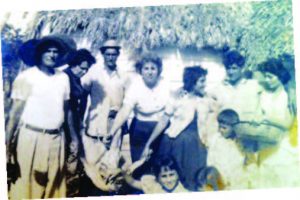 Indeed, Dr. Cordero is proud of the fact that he has performed more than 800 carotid endarterectomy surgeries, with very few complications and zero deaths. In addition to a high success rate, it’s worth noting that his is a solo practice in a corner of the world where group practices are more common.
Indeed, Dr. Cordero is proud of the fact that he has performed more than 800 carotid endarterectomy surgeries, with very few complications and zero deaths. In addition to a high success rate, it’s worth noting that his is a solo practice in a corner of the world where group practices are more common.
“As a solo practitioner, I am unique,” he explains. “There are different boards in surgery, and if you want to distinguish yourself, you specialize and join a group, and that’s all you do. You can’t be good at everything. But if you go to a group practice nowadays, you may not see the same doctor twice. As a patient, I like to see the same doctor because there’s a level of trust and comfort that develops over time.”
Dr. Cordero was born in Cuba in 1950. At the age of 9, he immigrated with his brother and parents to the Union City/West New York area. As a student at Emerson High School he was called to the medical profession by his favorite teacher.
“Mrs. Zippo made biology come to life,” he says, noting that he didn’t let his weak math skills stop him from pursuing his passion. “She was a really great biology teacher who inspired me to want to go into medicine.”
Thirty-five years later, while attending a surgical conference, he sat across the lunch table from another doctor whose nametag said “Dr. Zippo from Union City, Kentucky.”
“I thought it was such an odd coincidence that he had the same last name as my teacher from Emerson High
School in Union City. I told him, ‘the reason I’m sitting here in front of you is because of a teacher by the same name who taught at my high school in Union City, New Jersey.’ The man nodded knowingly and said, ‘That was my mother.’”
Dr. Cordero didn’t have an easy time in school: “Everything was tough for me coming from an inner city school. The educational system is not the same that the kids get in suburbia. So I had to make up ground in college.”
He began at Rutgers University for pre-med and went on to SUNY Buffalo Medical School. During that time, another teacher pointed him toward becoming a surgeon.
“Dr. Lee at Buffalo was a great anatomist; I enjoyed his anatomy class so much that I decided I had to become a surgeon,” he recalls, adding that part of his fascination was the artistry of the human body. “Everything has a purpose, everything is placed so perfectly. It’s a perfect machine.”
At SUNY Buffalo, Dr. Coredro also met his future wife. He went on to do his residency at Montefiore Medical Center in the Bronx.
“Since the first few letters in our last names were similar, we were paired off in our histology lab and had to use the same microscope, so we became friends,” he recalls. “Finishing medical school together, we were matched as interns at Montefiore/Albert Einstein.”
They worked dogged hours, often more than 140 per week. Upon graduation, he established both solo and group practices in Union, while she went on to become an internist with a sub-specialty in adolescent medicine. Now with his main practice in Roselle Park, he is affiliated with multiple hospitals in the area, including Newark Beth Israel Medical Center, where he completed a fellowship under Dr. Bruce Brener, and Trinitas Regional Medical Center, which he joined during its inception.
In 2005, he was invited by a fellow doctor on a medical mission trip to the Philippines.
“I saw the need these people had for not only medical equipment, but surgical care,” he says. “There was an extreme lack of medical care and the urgent need for items that are routinely discarded by hospitals in the United States. We realized the usefulness of these items in the places we visited.”
By 2007, Dr. Cordero had co-founded Mano-A-Mano International Relief Organization. Mano-A-Mano routinely ships out containers of medical supplies donated by hospitals to Third World countries including Venezuela, Haiti, Dominican Republic, Ivory Coast, Grenada, and Guyana, in addition to the Philippines. Medical missions are designed to provide immunizations, health education, disease prevention, dental screenings and treatments, eye examinations, and free reading glasses. Most recently, Mano-A-Mano is opening a small charitable surgical center in Pierre Payen, Haiti. He plans to teach surgery in underdeveloped countries when he retires, and offer mobile cancer screenings for women where there is a high breast cancer mortality rate.
“It makes me feel great to be able to go to other countries and treat people who would never be able to be treated because they have no money and no access to care,” says Dr. Cordero. “They are so appreciative and you can feel that appreciation for taking care of them.”
The only compensation is the joy he gets from the look on their faces.

Pedro Cordero, MD, RVT, FACS Chair of the Periop
Value Analysis Committee
908.241.2401
A unique collaboration puts healthy choices within reach of a “growing” population.
By Yolanda Navarra Fleming
At roughly 125,000 residents, Elizabeth ranks as New Jersey’s fourth-largest city. According to the Centers for Disease Control, 37.96 percent of its residents are classified as overweight and 28.71 percent are obese—particularly in the Bayway, Elizabethport, and Midtown areas. Complicating matters is the fact that 17 percent of Elizabeth’s population lives below the poverty line, and that many residents do not have easy access to grocery stores because of physical distance or immobility.
For people like Brandy Rumola, her husband, and two children, who live in the Mravlag Manor housing project, Elizabeth’s Mobile Market program—sponsored by Groundwork Elizabeth and The Foodbank, and organized by the Shaping Elizabeth coalition—offers more than a hand-out.
 “Eating healthy is one of those things I’ve been meaning to do, but had a hard time with,” says Rumola, a 36-year-old stay-at-home mom whose children are 13 and 10. “The Mobile Market is such a help because we get fresh vegetables and fruits, which means a few less dollars I have to spend. But they also give us recipes…and I’ve learned about portions, saturated fat, and things I didn’t know before.”
“Eating healthy is one of those things I’ve been meaning to do, but had a hard time with,” says Rumola, a 36-year-old stay-at-home mom whose children are 13 and 10. “The Mobile Market is such a help because we get fresh vegetables and fruits, which means a few less dollars I have to spend. But they also give us recipes…and I’ve learned about portions, saturated fat, and things I didn’t know before.”
In 2013, a group of organizations known as the Shaping Elizabeth coalition came together to mastermind a plan to stem the spread of chronic disease with a combination of health screenings and services, nutrition education, food distribution, and community gardening. They began with a grant from Shaping NJ (the state partnership for nutrition, physical activity and obesity prevention), and support from the Gateway Family YMCA.

Members of Shaping Elizabeth announce the publication of the eighth annual County Health Rankings by Robert Wood Johnson Foundation and the University of Wisconsin Population Health Institute. The event was held at the Gateway Family YMCA’s Elizabeth Branch.
Catherine J. Hart, deputy executive director of the Housing Authority of the City of Elizabeth (HACE), which helped establish the Mobile Market program, says it’s not just about the food.
“It brings residents together,” she says. “HACE has enlisted a team of resident volunteers who distribute the food, which means they get out and meet one another directly. They look out for each other. The young people help the seniors in carrying items back to their houses. If someone can’t [physically] make the distribution, residents volunteer. There’s a tremendous amount of communication between staff and residents enabling HACE to bring in other forms of assistance and support.”
Alane McCahey, project manager of Shaping Elizabeth and Senior Director of Community Initiatives at The Gateway Family YMCA, adds that eventually residents will be able to be trained in food handling, which could also mean future job opportunities.
“Our guiding principle is to bring the resources to the people, versus trying to get people to come to us,” McCahey explains. “We’re much more apt to get people to make changes in their lives that way. We want people to be part of the solution so it’s more of a partnership. It’s one thing to have food handed to you, and another to know how to best use it. We’ll also offer education by a nutritionist from Trinitas.”
Recently, the coalition received another grant from the Robert Wood Johnson Foundation, involving NJ County Health Rankings and Road Map, one of the RWJ’s subsidiaries, as well as the City of Elizabeth, and Proceed Inc.
A program called Play Streets—sponsored by Gateway Family YMCA, City of Elizabeth, The Shaping Elizabeth Community Health Initiatives, and the Community Food Bank of NJ—creates a block party atmosphere to welcome residents in various neighborhoods to engage in activities that speak to their specific needs through children’s activities, health screenings, and more. Last year, through the Safe Kids Program at Children’s Specialized Hospital, free bike helmets were given out to kids who attended.
Early on, Trinitas organized the One Flight Up, Two Flights Down campaign to encourage walking for physical fitness. But the hospital also conducted a walkability audit of the city to determine what improvements could be made.
“We’ve come a significant way,” says Joseph L. McTernan, Sr. Director of Community and Clinical Services at Trinitas Regional Medical Center. “We focus on putting our community first. We have put a lot of work, time and effort into ensuring that the groups learn to work together as a team. The groups are structured for strong collaboration and sharing information between partners. We’re working well together even as we tackle some of the harder topics.”
With the help of Jonathan G. Phillips, executive director of Groundwork Elizabeth, residents take matters into their own hands by growing produce in community gardens. “We are involved in so many ways,” says Phillips. “We’re proud to be part of the coalition working with NJ Health Initiatives to build a culture of health in Elizabeth.
As for Brandy Rumola, she wonders if the Mobile Market is a benefit that’s here to stay—because it’s one of those things that just seems too good to be true.
“I genuinely hope they keep the program going,” she says. “I know other families that depend on it because there isn’t a grocery store close by. Not everyone has a car or has money to take a cab. It benefits the whole community.”
Hart offers comfort by adding, “At a time when funding is limited and opportunities are scarce, the Shaping Elizabeth collaboration has been—and will continue to be—beneficial not only for the agencies but for the people we serve: They will benefit from the services that as a group we can provide.”
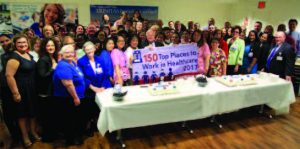 TRINITAS NAMED A TOP HOSPITAL – AGAIN!
TRINITAS NAMED A TOP HOSPITAL – AGAIN!
Inside Jersey magazine’s just-published ranking of the state’s best hospitals shows that Trinitas is ranked as a 2017 Top Hospital in the following categories: Top Hospital Overall, Treatment of Breast Cancer, Treatment of Prostate Cancer, Treatment of Congestive Heart Failure, Hip and Knee Repair, Care of High-Risk Pregnancies, Patient’s Room and Bathroom Kept Clean, Doctors Always Communicated Well, and Registered Nurses
Always Communicated Well. “We are gratified that physicians in our region responded so enthusiastically to the survey, which produced Top Hospital rankings for Trinitas in so many categories. Their trust in the quality of our care is very important to us,” stated Gary S. Horan, FACHE, President & CEO of Trinitas.
 TRINITAS RN JOINS GATEWAY CHAMBER TO EMPOWER YOUTH!
TRINITAS RN JOINS GATEWAY CHAMBER TO EMPOWER YOUTH!
The Gateway Regional Chamber of Commerce hosted a comprehensive event for our youth on the importance of networking and building key skills. Veronica Sanchez-Rico, RN, Clinical Coordinator at Trinitas, was among the featured panelists who discussed their careers. Students gained critical insight that included the value of following one’s passion. Veronica and Jim Coyle (President, Gateway Regional Chamber of Commerce) participated in an interactive networking activity with the students who attended the event
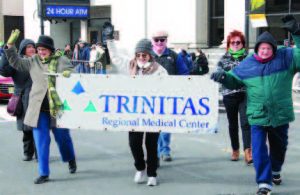 ST. PATRICK’S PRIDE
ST. PATRICK’S PRIDE
As tradition holds, Trinitas participated in the Union County St. Patrick’s Day parade on March 18th. Congratulations to the parade’s organizers, especially this year’s Grand Marshal, radio personality Joseph Nolan, for their great work despite the weather. The Trinitas team marched proudly down Morris Avenue, wearing their pride on their sleeve!
 UNION COUNTY’S GOT TALENT!
UNION COUNTY’S GOT TALENT!
Trinitas sponsored the Union County Teen Arts Festival, an annual two-day celebration of the arts. The event is open to all students from public, charter, private and parochial middle and high schools in Union County. Over 4,000 students from across Union County attended the event over the course of two days. Sixty-six Union County middle and high schools participated in the various exhibits, proving that Union County teens have tons of talent!
 HEALTH RANKINGS RELEASED FOR NJ
HEALTH RANKINGS RELEASED FOR NJ
Joe McTernan, Senior Director/Community & Clinical Services, took part in a press conference announcing the publication of the eighth annual County Health Rankings by the Robert Wood Johnson Foundation and the University of Wisconsin Population Health Institute. The event was held at the Gateway Family YMCA Elizabeth Branch. Thanks to health improvement initiatives by Trinitas, the Gateway Family YMCA, the City of Elizabeth and others, Union County was ranked as the 8th healthiest out of the 21 counties in New Jersey. “Trinitas Regional Medical Center has a strong, deep-rooted desire to improve the health of those we serve,” explained McTernan. The full Rankings are available at www.countyhealthrankings.org.
 TRINITAS PARTNERS WITH ELIZABETH HEALTH DEPARTMENT AND SHAPING ELIZABETH
TRINITAS PARTNERS WITH ELIZABETH HEALTH DEPARTMENT AND SHAPING ELIZABETH
The City of Elizabeth Health Department and Shaping Elizabeth came together with Trinitas experts to discuss health-related issues in honor of National Minority Health Month. The forum discussed topics such as where to find health care information, as well as how to prevent heart and kidney disease. Attendees received key information on exercise options, eating habits, and where to find healthy food throughout the community.
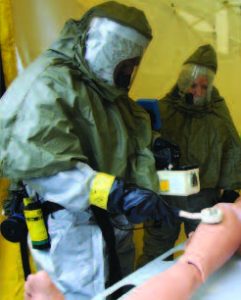 TRINITAS PARTICIPATES IN REGIONAL DRILL
TRINITAS PARTICIPATES IN REGIONAL DRILL
Trinitas Regional Medical Center participated in Operation Gotham Shield, a comprehensive drill involving a mock radioactive “dirty bomb” explosion in the metropolitan area. As part of the exercise, the Trinitas team assembled a decontamination tent with staff in full protection suits in order to treat injured “patients.” The purpose of this exercise was to create a learning environment intended to measure and improve the team’s ability to work through an integrated response to a widespread disaster.
 HITTING A HIGH NOTE
HITTING A HIGH NOTE
Chuck Salamone and Diane Aragona, the husband and wife duo behind His & Hers Music based in Nutley, NJ, recently brought their passion for music and their ability to recognize talent to the Spring festival of the Mid-Atlantic Music Teachers Guild (MAMTG). They joined fellow music instructors at the event, where they also evaluated performers from throughout the region at the MAMTG’s rigorous competition. Three of their students were among those recognized at the festival. Graduates of Rutgers with Bachelors and Masters degrees in music, Salamone and Aragona, shown here with their winning student, vocalist Stephanie Helfgott, offer voice and instrument lessons for children through adults in their private home studio and in students’ homes. To learn more about His & Hers Music, check out their Facebook page @hisandhersmusicllc. further information about Diane Aragona and Chuck Salamone can be found at dianearagona.squarespace.com and http://AmigosAmigosBand.com.
One man’s journey to self-realization and home construction.
By Michael Jacobsen
How hard could it be? You watch a few YouTube videos, make a couple of trips to Home Depot and get to work. In a few weeks, you proudly show off your Do It Yourself (DIY) project—maybe a finished basement or a paver patio–to friends and family, who marvel at your resemblance to Bob Vila, or at least to Tim the Tool Man.
Reality, alas—as I look back on my “DIY or die” project (as it came to be known around our household)—is so much different. At least I lived to tell about it, although my marriage very nearly did not survive. But I’m getting ahead of myself. First I have to tell the painting story, because it sets the tone for the entire project.

www.istockphoto.com
You see, it was near the end of DIY or DIE that my newlywed wife and I were ready to put the finishing touches on a basement renovation. She hadn’t been too involved in the project other than some color and design advice. But painting was right up her alley…until the paint job found me happily slapping on the Mojave Sand and it all went wrong. As I bent down to reload my roller I caught my wife painting directly over where I had just finished
“You leave too many streaks,” she explained.
At which point DIY became YDI—you do it—and I left to take a nap. But back to the beginning.
DIY vs. DIFM
There actually is a term for having others handle the job: DIFM, which stands for Do It For Me. In the real world it can complement the real Do It Yourselfer. The trick is knowing where one stops and the need for help from others begins.
DIYers fall into two camps. Many do it just to save money, hating to pay the premium that skilled laborers charge. Often the cost of labor doubles the cost of the entire project. And then there are those who, like me, relish the challenge of doing it myself—regardless of whether it actually saves money or even looks very good at the end. The pleasure and pride of looking around and realizing that my hands touched every piece of a project is what drives many of us. Sometimes in the right direction, sometimes off a cliff.
Every list of pros and cons of DIY versus DIFM starts with the price equation, then moves onto the skill level and, finally, adds in equal doses of available time and quality of the finished job.
“When it comes to price, DIY has the professional beat hands down, but there is more to the story than that,” points out a blog post on the Rhode Island-based Hebert Design/Build website. “Before you consider taking on a home improvement project, take a good, hard look at your skills and experience.”
 Another point to consider: If a home improvement project is not done correctly, who will you call to fix it? If you hired a professional, he should stand behind his work. If you did the work yourself, you may still end up calling the same guy to fix the job. Last but not least, according to the pros at the aforementioned Hebert Design/Build, a DIY home improvement project can have a fantastic outcome, but there is likely to be some “significant stress” along the way. Oh, if only I had read that before I started out with my modest basement refinishing. In reality, “significant” turned into “overwhelming.”
Another point to consider: If a home improvement project is not done correctly, who will you call to fix it? If you hired a professional, he should stand behind his work. If you did the work yourself, you may still end up calling the same guy to fix the job. Last but not least, according to the pros at the aforementioned Hebert Design/Build, a DIY home improvement project can have a fantastic outcome, but there is likely to be some “significant stress” along the way. Oh, if only I had read that before I started out with my modest basement refinishing. In reality, “significant” turned into “overwhelming.”
Knowing Your Limits
 I write magazine articles for a living, so what do I know about DIY home renovation projects? Turns out, enough to get myself in trouble, but also enough to get myself out of it.
I write magazine articles for a living, so what do I know about DIY home renovation projects? Turns out, enough to get myself in trouble, but also enough to get myself out of it.
Let’s set the scene: A growing family in a typical suburban New Jersey 1,000-square-foot, three-bedroom ranch with a nice backyard and an unfinished basement. Big enough for now, too small for the next decade. What to do, short of moving to a larger home with a larger mortgage? Wait. Did someone say unfinished basement?The space—all gray cinderblock walls, exposed beams and cement floor—is ripe for an aspiring DIYer such as myself with more time than money, more energy than brains and certainly more enthusiasm than expertise. Whatever. Let’s head to Home Depot.
Those guys are great. Many of them are ex-contractors felled by a soft New Jersey housing market, looking to make ends meet while sharing what they know with people like me. Want to know how many 2x4s you’re going to need? What type of ceiling to put in? How many linear feet of this and that? They actually know! And they are kind enough not to snicker right to my face as I ask stupid questions. Also, before hammering my first nail, I spent an afternoon with my good buddy Mikey G., perhaps the most ambitious DIYer I know. Now semi-retired, he was busy gutting and redoing his entire house, for God’s sake, so he must be some sort of expert at everything.
Turns out, he was an expert at finding experts. His mantra: Know when you are getting in over your head.
“When you are not sure about the outcome of what you are about to do next, when you are not sure if it is the red or black wire you should be touching, then it is time to call an electrician,” he says.
 Mikey G. is fond of YouTube videos. There are instructional videos for everything and he makes sure he watches a few—whether it is for pouring concrete or hanging a ceiling light—before he is comfortable enough to dive in. If he never gets to that comfort level, he turns to a pro: “Electrical work and plumbing are not rocket science, but one mistake can be very hurtful, either to yourself or to your wallet.”
Mikey G. is fond of YouTube videos. There are instructional videos for everything and he makes sure he watches a few—whether it is for pouring concrete or hanging a ceiling light—before he is comfortable enough to dive in. If he never gets to that comfort level, he turns to a pro: “Electrical work and plumbing are not rocket science, but one mistake can be very hurtful, either to yourself or to your wallet.”
His solution is a combination of DIY and DIFM.
 “I had to know what I could handle and when I see an opportunity to do it myself I do it,” Mikey G. says, pointing out that the contractors he is working with are more than willing to take a few bucks off the invoice if he handles some of the labor. That was to become my blueprint, especially after consulting with Big Joe, who I was told was the best handyman in northern New Jersey. Having learned the trade from his father (whose father before him taught him), surely this Joe of all Trades would have some sage advice.
“I had to know what I could handle and when I see an opportunity to do it myself I do it,” Mikey G. says, pointing out that the contractors he is working with are more than willing to take a few bucks off the invoice if he handles some of the labor. That was to become my blueprint, especially after consulting with Big Joe, who I was told was the best handyman in northern New Jersey. Having learned the trade from his father (whose father before him taught him), surely this Joe of all Trades would have some sage advice.
“Yea, don’t be an idiot and try it yourself,” was his immediate response. “I wouldn’t try to write one of your boring articles, why you gonna try to do my job?”
Smart, insightful guy for a builder. But apparently he and his ilk get quite a kick out of DIY fails. In fact, they have a word for them: Happy Homeowners. As in “I had to go in and fix a Happy Homeowner job. Charged them a little extra.” Therein lies one of the pitfalls of trying (and failing) to do it yourself. If you come up short, you have to call guys like Big Joe and his friends, who will fix it for you, but at a price that may be more than it would have been had you called him first.
“Homeowners have to know what they can do and then stop there,” he says. It’s worth pointing out that Big Joe knows his limitations: “I never touch electric or plumbing because I know I don’t know how to do it. That way I know that when I flush the toilet the lights won’t shut off.” His advice: Let the pros do it. They have the knowledge and expertise and, just as importantly, the right tools. And when they see you are in trouble and can’t do it yourself, dollar signs start flashing in their eyes.
“I can’t tell you the number of times a Happy Homeowner gets halfway done and then I get a phone call to finish the job,” he says. More often than not he has to start from scratch because the initial work just doesn’t work. His favorite story? A Happy Homeowner tried to sheetrock and spackle a room but did such a bad job that before calling for the cavalry, he tore the whole thing down instead of admitting he screwed up. That one cost him a lot.
Identifying My Limits
At the end of the workday, I can honestly say I accomplished a lot of the basic stuff myself: nailing 2x4s to the frame, figuring out a grid for the drop ceiling, even pouring some concrete in one corner to level the floor. My rule of thumb turned out to be DIY on things you can’t see and leave the visible stuff to the pros.
So my experience came down to three pieces of advice about three things you don’t want to do yourself:
- Electrical. One of the first books I purchased had a title something like How To Do Electrical Work and Live To Tell About It. Sort of a precursor to Electricity for Dummies. Well, turns out I’m no dummy, and I really don’t know my red wire from my black, so the first expert I called was a local electrician. Well worth any extra cost and I lived to write about it.
 Plumbing. Speaking of not cheap, the one item that floated my budget down the river was plumbing work. Not much more than moving some pipes and routing the heating baseboards. The last thing I wanted was a flood of Biblical proportions ruining all of my hard work because I didn’t solder something completely.
Plumbing. Speaking of not cheap, the one item that floated my budget down the river was plumbing work. Not much more than moving some pipes and routing the heating baseboards. The last thing I wanted was a flood of Biblical proportions ruining all of my hard work because I didn’t solder something completely.- Finish Work. You can’t cover everything with a coat of paint, so it is a good idea to have someone detail-oriented to handle things like spackling, trim, mitering the molding and hanging the doors. Nothing ruins a nice project like a crooked door that won’t close.
In the end, it turns out my two best tools were my hammer (I got pretty good at pounding away at things) and my cell phone.
It’s amazing how many contractors are out there looking for work.
5 REASONS I’D DIY AGAIN
 Price • You know the saying Will work for food? That’s me, plus maybe a cold beer. Either way, as long as I didn’t screw up too badly, there’s no doubt I saved plenty by not paying the mark-up of a skilled contractor.
Price • You know the saying Will work for food? That’s me, plus maybe a cold beer. Either way, as long as I didn’t screw up too badly, there’s no doubt I saved plenty by not paying the mark-up of a skilled contractor.
Challenge • I’ve always liked to tackle new things. As long as they don’t tackle me back, it’s all good.
No Complaints • My father always had a saying when we were working on
something together: “Suits me and I’m fussy.” It was tongue-in-cheek and usually went along with “That’s good enough for government work.” Translation: Hey, it’s done and no one is complaining, so on to the next thing.
Satisfaction • There’s nothing like sitting back with a cool beverage and looking around at work that I did. Myself.
New Skills • This stuff isn’t rocket science and anyone with a little intelligence and drive can learn the basics. Home improvement can also be personal improvement.
 5 REASONS FOR DIFM
5 REASONS FOR DIFM
Stress • Did I tighten that pipe enough? Did I use the right nails? Did I get enough materials? Worry can take years off of your life and add weeks to a project.
Quality • Be honest. Are you really going to be able to produce work to a standard of quality that matches a professional?
Danger • Unless you really, really know electricity, don’t try to wire anything. Same goes for plumbing. And maybe climbing on a roof.
Warranty • If you screw up, who you gonna call to fix it? But if a contractor did the work in the first place and something is wrong, you (hopefully) have someone to make it right.
Time • Lots of us have better things to do, like real jobs, spouses, kids, sleep. Do you really want to spend your free time hanging sheetrock?
TALES FROM THE FRONT LINES
It didn’t take many conversations with contractors to come up with some of their favorite Happy Homeowner stories. Here are three of them.
Jumping the Gun
After spending three days framing and sheet-rocking a room and after finishing with two coats of spackle on Friday, this contractor planned to come back on Monday to finish the job with a third and final coat to perfect the job, as is SOP. But when he showed up on the job Monday at 8 a.m., he found the homeowner had already painted the room. “I guess it looked good enough to him and he thought it was finished.”
Door No. 1
One DIYer neglected to ask his Home Depot guy what the standard size of a door was. So he framed in a closet for his washer and dryer and figured, hmmmm, a door this random size was would look nice. So he slapped a few 2-by-4s up into an opening that looked about the right size. Trouble was, when the contractor came to hang the door the opening bore no relationship to reality. It took him a half-day to resize the opening and then hang the door. Obviously, there was no cost savings there.
Not My Fault
Thinking he would help out a cousin, a contractor agreed to do some finish work on the walls and leave the rest to his Happy Homeowner relative. He didn’t see the outcome until about two years later, when he stopped by for a visit and his cousin pointed out how bad everything looked and blamed it on his finish work. But, our pro pointed out, it was actually the terrible paint job done by his 80-year-old father that left the job looking amateurish — all streaks and drops and missed spots. Turns out his cousin had been blaming him for a bad job for two years. Who says every good deed doesn’t go unpunished?


Editor’s Note: Mike Jacobsen is a frequent contributor to consumer and trade magazines and an aspiring DIYer. That means his words are mostly spelled correctly, but his house has a lot of unusual angles, mismatched tiles and paint drops on the floor.
Authentic. Exotic. Spectacular. So what are you waiting for?
By Andy Clurfeld
Summer travel season is upon us. Time to dust off the passport and plot excursions to ports exotic and intriguing. Or stay home and travel light—very light. And very near. Once upon a time, adventurous diners in New Jersey had to travel thousands of miles to experience the cuisines of foreign places. Not true today.
In fact, Maplewood resident Anthony Ewing is tracking and mapping the Garden State’s myriad and many ethnic cuisines on his in 2010, it’s a veritable United Nations of dining destinations that includes some 1,200 Jersey restaurants serving 60 different cuisines. “From Afghan to Vietnamese,” Ewing says.
The New Jersey native, who started mapping his top food finds after moving back home from Brooklyn, got us to thinking about all the terrific eateries practically in our backyard. Sure, we love our sushi nights, and the “local” that serves a beloved Italian dish is never out of our hearts. But on this trip around our neck of the woods, we wanted to explore foods a little less familiar. So we’ll hold the best-sushi-rolls and Nonna-approved red-sauce roundups for other issues of EDGE.
Herewith, an eating tour that includes Chinese-inspired Peruvian, Ethiopian, Jamaican, Middle Eastern, Southern Indian and Russian cuisines.

Photo courtesy of Rupamdas75
Chowpatty
1349 Oak Tree Road • Iselin
732-283-9020
www.chowpattyfoods.com
Let’s cut to the postscript: So enamored of the dahi batata poori at Chowpatty were we that, seconds after we finished dining, Atsuko Sasaki and I rushed next door to Chowpatty’s market to buy the ingredients to make them at home. The little dish that captivated was a small, delicate puff made from chickpea and rice flours that’s sliced at the top so it could be stuffed with potato, a cilantro-green chili kind of pesto, a tart-faintly sweet reddish-brown sauce, and a slap of super-creamy yogurt. We downed those babies in no time
Now, my pal Atsuko is a certified chef in Japan and mightily skilled in the kitchen, so she replicated the dhai bataka poori at home first time out. I, of course, forgot the yogurt, but still managed to enjoy eight puffs before I even sat down to dinner.
This is what dinner at Chowpatty can do for you: educate and stimulate.
After being enchanted by the dhosas, Atsuko found a friend who offered to teach her how to make the crispy rice flour crepes that are super-sized and can be filled with all manner of things: spices, cheeses, onions, vegetables. We nab the cheese-masala dhosa that puts two spice mixtures into play to great effect. A chile-potent red does a do-si-do with a cilantro-coconut green as they take aim at the sultry cheese melting into the crunchy crepe.
The sturdier uttapam, also made with rice flour, is served here much like a pizza. Ours is topped with a variety of vegetables and we can’t help but slice it like a tomato pie. We’re loving it alongside the tuver ringan, a mash of eggplant and peas that comforts and warms.
You must try a Thali platter at Chowpatty: Served on a round platter compartmentalized into little dishes of vegetables, rice, dal, pickled vegetables, yogurt-based sauces and legumes, it’s a feast meant to be eaten with tiny pappadum and charred bread made with millet flour. Don’t be shy with the sauces, including chili pastes hot and moderate, ghee and raita.
Dessert? Go for the pineapple-orange ice cream or the very dense, very rich, extraordinarily delicious mango kulfi, crowned by pulverized pistachios. We’ll end with another postscript: That’s sold in the next-door market, too.
Nargiz Deli & Cafe
1651 Springfield Ave. • Maplewood
973-761-0123
Facebook: NargizDeliCafe
You can get gyros and paninis and pita sandwiches crammed with feta-cukes-tomato and your craving of the moment (lamb, chicken, hummus) at Nargiz, a specialty market with a bent towards things Russian and Eastern Mediterranean. But why get what practically is ordinary in NJ when you can get a piroshkie?
This, to me, is a no-brainer. This Russian marvel is an uber version of a pirogi crossed with a buttery, flaky almost brioche-style roll stuffed with something wonderful. Honestly, you don’t even need sour cream. That’s how good these piroshkies are.

Photo courtesy of Nargiz Deli & Cafe
Do like we did and get an assortment. Lamb? Yup. Potato? Natch. Cheese? Of course. As I eat them, I can’t help but feel this is a kind of melting-pot food that so many people from so many cultures would relate to easily. On top of the pirogi-brioche appeal, it’s got a Korean pork bun sensibility and a hometown hoagie attitude.
Lamb meatballs are killer tasty at Nargiz. Find them in the display cases and tell the friendly folks behind the counter that you’d like them warmed so you can eat a bowl of them at one of the cafe tables. While you’re at it, score the earthy, forcefully smoky eggplant casserole and a scoop of the Georgian bean salad, flush with cilantro, chopped onions and nuts.
Don’t leave without shopping around. I found a pretty jar of pomegranate molasses that will make my next muhammara (red pepper-walnut-pomegranate) spread very likely the best ever. No offense to mail-order businesses, but you never know what you might bump into when combing the shelves of a place like Nargiz.
I am going to figure out what I’m going to do with the cured sardines I snatched from the refrigerated case. Tonight might be the night I warm some olive with lots of lemon juice and flat-leaf parsley and toss those little fishes with strands of spaghetti and that sauce. Might be? Definitely will be.
Lalibela
261 Irvington Ave. • South Orange
973-327-4840
Facebook: Lalibela Ethiopian
Kategna is injera bread plied with butter and spiked with hot chili spices. It isn’t shy and it isn’t like anything you’ve ever tasted, unless you’ve been intimate with the addictively sour, spongey bread of Ethiopia. Made from teff flour, injera is the vehicle for eating in Ethiopia, used instead of forks and spoons and knives. Its uniquely pourous texture makes it one sublime scooper, and it’s the principal reason you should check out Lalibela, a small, humbly decorated storefront with a devout clientele.
So back to the kategna: Here at Lalibela, the chile-flecked injera is rolled and sliced something like a wrap sandwich – only there’s no filling. The flavor and the texture of the injera itself are what give it charisma.
It’s almost as though there’s an effervescence to injera. It’s rather magical.

Photo courtesy of Lukasz Nowak
Anyway, here’s what happens when you order a pair of entrees at Lalibela and pretty much any Ethiopian restaurant: Both entrees, as well as a pair of sides of your own choosing, come spooned atop a huge, flat pancake of injera. You also get a basket of jelly-roll style injera. Take your pick and start scooping.
The lamb stew, with lots of garlic and onions and a pronounced pop of tomato and pepper, is a stunner, with layers of flavor that serve as foils for the sour bread. A stew of beef is less interesting, mostly because the spicing is less complex, but little dumplings made from chickpea flour and and long-cooked in a berbere-spice mix with onions holds its own with the crisp, thin pancake.
Collards are a must, for they serve as a bridge between the meats and the legumes. Lentils, for instance, are on fire in a way that rivets; when you alternate between the collards and the fiesty beans, there’s a yin-yang that comes into play.
The service at Lalibela varies: You might get a helpful soul or one less interested in your culinary education. Odds are, no matter, you will at very least bump into new flavors that make for a new favorite dish.
MishMish
215 Glen Ridge Ave. • Montclair
973-337-5648
www.mishmishcafe.com
MishMish is a hit and hip restaurant in the downtown district, a short stride from Anthropologie and an even quicker journey to the mind-set of Yotam Ottolenghi and his era-defining “Plenty” and “Jerusalem” cookbooks. You want a little Yotam without the kitchen work? Come to MishMish and be transported to the heart of the Middle East.
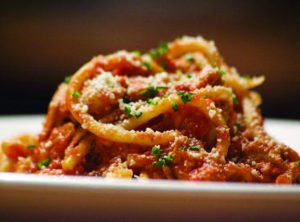 A local who is conversant in MishMish-ese tells me the hummus is a marvel, but you can skip it in the dip round since it’s easily obtained in hummus bowl form. This is excellent advice, especially since the smoked eggplant spread here is one to order by the gallon. Maybe by the cauldron, since it’s extra-deeply smoky, comes with a flourish of mild, crumbled cheese, and is the perfect partner for the singularly sensational pita.
A local who is conversant in MishMish-ese tells me the hummus is a marvel, but you can skip it in the dip round since it’s easily obtained in hummus bowl form. This is excellent advice, especially since the smoked eggplant spread here is one to order by the gallon. Maybe by the cauldron, since it’s extra-deeply smoky, comes with a flourish of mild, crumbled cheese, and is the perfect partner for the singularly sensational pita.
Let’s take a moment to talk about this pita. Forget what you buy in the supermarket. This is pita from Planet MishMish, a thicker incarnation that mines the depth of flour like, say, a Dan Richer at Razza (in Jersey City) does for his bread and pizza.
Fried cauliflower is worth the splurge on oil intake, cause it’s so good, so comforting, that it doesn’t even need the yogurt-based dip served on the side. I flat-out adored the shishito peppers char-grilled whole and served naked save for a wedge of lemon. Eat ’em by the bushel.
If you are a card-carrying member of the Ottolenghi flock, you know from shakshuka. (If not, it’s eggs poached in tomatoes, onions, chilies and spices, often served with cheese on top and bread.) You’ve eaten shakshuka for breakfast, for lunch and for dinner. It’s the absolute-right-at-any-time dish. How did we live without shakshuka?Anyway, MishMish does it with mushrooms and harissa, with lamb meatballs and with lamb sausage. Each has a following. I can vouch for the lamb meatballs. I could write a whole story just about the lamb meatballs, but I don’t have time or space.
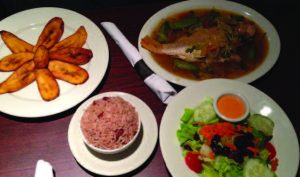
Photo courtesy of Pimento Grill
Mostly because I want to get to the hummus bowl with ground brisket ragu. Are you in heaven yet? No kidding: The folks here grind up brisket and add it to a slushy of tomatoes and warming spices. Think cinnamon most prominently and you’ve nailed it. If you eat this dish and don’t immediately plan a dinner party, do not consider yourself on the food-centric spectrum. Depending on your mood, you might favor the grilled chicken shawarma hummus bowl, a beauty thanks to the roasted tomatoes and drop-dead sensuous caramelized onions.
Think about it. Is there a reason not to eat the MishMish way every day?
Pimento Grill
1908 Springfield Ave. • Maplewood
973-846-4555
www.pimentogrill.biz
Pauline Barnes, owner/chef at this sweet storefront, wants you to know that once you enter her domain, you are under her care. And guidance. She’ll help you plan your dinner, your party, your life. She’ll tell you why you need Pimento’s jerk chicken, why you must experience her oxtails, why you need the coconut “run-down” red snapper.
We are happy in her presence and soothed by her comforting Jamaican fare. No, it’s not high-on-the-Scoville scale stuff, but it’s lazy-day swell when island attitudes beckon and you want to turn yourself over to dishes that take you away. Like a Calgon bath used to do.
Talk about those oxtails. They are simmered in gravy, along with big, broad butter beans and a host of island herbs and gentle spices. Similarly attuned to the milder side of eating life are the brown stew vegetables, which incorporate soya chunks to maximum advantage. This is the dish that will cure you of your misconception that everything island is going to set off a 12-alarm fire in your mouth.
We took on the curried goat with relish, gnawing on the hunks of lamb-like meat. Ditto for the jerk chicken, which is among the mildest I’ve ever tried and totally right for beginners. We snacked on the fried sweet plantains throughout dinner, because, frankly, they put you in a “nothin’-can-be-finer” mood.
I think the under-the-radar fishes just might be the best tickets on Pimento’s menu. Pauline’s touted run-down snapper is a winner, simmered as it is in a coconut sauce and served head-on, bones-in, yet easily filleted at table. It was the sauce, creamy, yet light, and flecked with greens, black beans and onions, that made the dish divine. The escoveitch whiting, even though fried, offered a nice ping of vinegar.
Hello, island time. We need you.
Don Julio
50 Marshall St. • Elizabeth
908-820-9494
www.donjuliorestaurantnj.com
Chinese immigrants to Peru in the mid- to late-19th century brought with them culinary concepts and traditions they fused with ingredients and new sensibilities they discovered in their new home in South America. The result is a cuisine known as “Chifa,” and nowhere in New Jersey is it found with more authenticity and sheer deliciousness than Don Julio.
Located near the waterfront here, Don Julio is a destination. It can be crazy-packed on weekends; fair warning. Folks come for both the Chifa and also traditional Peruvian fare. The menu, almost telephone-book long, is worth coming early to read so you can study and plot.

Photo courtesy of Luis Delboy-Don Lucho
Here’s what I think you should do: Assemble a large party and go all-out. Do Chifa as your primary, but don’t miss the best of Peru here. First, have the ceviche, for it’s an expertly crafted Peruvian model, flush with shrimp, topped with hunks of sweet potato and plain potato, a chunk of big-kerneled Peruvian corn, crunchy beans and a ton of onion rings. Bet you will eat the whole thing.
Then go for the wonton soup. Frankly, strip mall American Chinese joints water down, and dumb down, wonton soup. See what it can be by sipping the mutlilayered broth holding delicate-skin wontons, thick slices of juicy roast pork, thick shreds of cabbage and slices of white-meat chicken. And, ah! The noodles, the noodles!
Fried rice is nirvana. It is light, bright and mostly about the exquisitely cooked rice. It’s neither salty nor dry. It is punctuated by nibs of pork, peas, egg and sprouts, and it possesses a seminal freshness.
Our server smartly directed us to the sirloin steak over “green noodles.” How simple, yet how beautiful. The “green noodles” are made so by tossing hearty spaghetti-like strands with a verdant sauce that looks and tastes like pesto made with cilantro. Which it is. But, again, there is a lightness and a brightness that speaks to a deft hand in the kitchen.
We cannot resist another recommended dish, the sweet-sour fried fish, which is neither sweet nor sour, but fascinating in its purity of taste. Plied with cabbages and surrounded by a brothy brown sauce, it looks like a bowl of confusion, yet yields clear, clean tastes. It says a lot about Don Julio. Which can teach you a whole lot about “from-away” flavors right in your own backyard.
 ETHNIC NEW JERSEY
ETHNIC NEW JERSEY
Anthony Ewing, founder, publisher, editor, writer of the peerless EthnicNJ.com Web site, has a handful of favorite ethnic restaurants in the EDGE sphere. Here are five, in no particular order, that are worth your while to check out.
The Banderas • Summit • Costa Rican
Enter to a full wall mural of a Costa Rican volcano. Find inside a traditional menu of rice dishes, including chicken and rice and shrimp and rice. “Costa Rica is all about simple, straightforward food,” Ewing says. “Not too spicy.”
 Seoulite • Berkeley Heights • Korean
Seoulite • Berkeley Heights • Korean
An early example of authentic Korean is this regional favorite that settled into a mainstream town years ago. “There aren’t barbecue tables,” Ewing says. There are, however, beautiful “soft tofu stews and bibambap made in the kitchen and rice cakes in red pepper broth.” Ewing notes there will be another branch of Seoulite opening soon in Somerville.
Thai House Rock • Colonia • Thai
Well, Thai with a hefty “side of rock-’n’-roll,” Ewing says. Think vinyl records on the walls. “It’s a hole-in-the-wall,” he adds, but the food is sincere.
Arepas Pues • Elizabeth • Colombian
“Authentic, Colombian-style arepas are served here,” Ewing says, which are different than those from other parts of South America.
Binh Duong II • Hillside • Vietnamese
It’s the younger sibling to the original, in Bloomfield, and Ewing pegs this one as serving better food. In fact: “Some of New Jersey’s best Vietnamese food.”
Editor’s Note: Andy Clurfeld recently presided over the 1st Annual Garden State Culinary Arts Awards. New Jersey’s most influential restaurants and chefs vied for top honors in 13 different categories in front of a standing-room-only crowd of foodies, friends and family. Several nominees have appeared in the pages of EDGE, including Cucharamama, A Toute Heure, Common Lot and The Frog and The Peach. You can check out these stories and others by clicking on the FOOD button at edgemagonline.com.
Rare is the actress who doesn’t pad her résumé with a couple of characters that sound a little bigger or more important than they actually are. Choice parts for women—and particularly women of color—are few and far between. By contrast, Regina King can barely keep track of the primo parts she’s snagged since she first starred at age 14 in the sitcom 227. Her film credits include featured roles in Boyz n the Hood, Friday, Jerry Maguire, How Stella Got Her Groove Back and Ray. In 2017, she supplied the voice for Dynamite, the leader of the smokejumpers in the animated film Planes: Fire & Rescue, while Netflix binge-watchers know her as Latrice Butler, the female lead in the new Netflix series Seven Seconds. Gerry Strauss recently caught up with Regina, whose television work includes indelible characters on The Boondocks, 24, Shameless, The Big Bang Theory, The Leftovers and American Crime, for which she has won a pair of Emmys. Based on her shattering performance in the Season 3 finale (spoiler alert!), she can probably start dusting off a spot for a third.

Columbia Pictures
EDGE: You were only fourteen years old when you played Brenda Jenkins on 227 in 1985. How did you land that role?
RK: I’d done the play that the show was based on. I did it for about a year, and the creator of that play sold it as a series to NBC. I didn’t play the daughter in the play. I played the girl that lived around the corner. But everyone that was in the play had a chance to audition. That was one of the stipulations that Marla Gibbs made sure that was in there, that everybody got a shot to audition. Beyond that, it was still a regular audition process—as far as the callbacks and coming back in and coming back in and coming back to see more people and more executives. Back then you didn’t have the internet where you could send a video.
EDGE: What was your relationship like with Marla?
RK: She is an amazing woman, and she is definitely someone who influenced my life in such a humongous way. She was a trailblazer in the ’80s. She had a very successful jazz club in L.A. She was on a hit show where she was executive-producing the show, and handling part of the writing on the show. She was doing a lot. I had a role and center seat to all of that. It was impressive. It really made an impact on me.
EDGE: Okay, so 227 ends and now you’ve been on TV for about five years playing a teenaged daughter on a family sitcom. Was it challenging to transition from the teenage daughter on 227 to other types of roles, to get people to see you in a different light?
RK: Yeah, yeah, I did go through a little bit of that. But Boyz n the Hood helped break that out.
EDGE: You worked with John Singleton on some of his other movies, including Higher Learning and Poetic Justice. Was there a chemistry between you?
RK: Yes, definitely. That’s a very common thing in the industry. People who have a good working relationship and grow together, continuously work together.
EDGE: You also had tremendous chemistry with Cuba Gooding Jr. in Jerry Maguire playing Marcee, the wife of Rod Tidwell.
RK: We have a great chemistry, Cuba and I. I think no matter what culture or color you are, if you’ve been in a relationship where you have been through highs and lows together—and you’re still best friends—then you understand. You feel Rod and Marcee. No matter what your situation is, if it’s football or running the family business that’s a chain of dry cleaners, whatever it is. If you’ve been through that fire together and still are best friends, anyone that’s experienced that knows the feeling.
EDGE: Looking back at all of the film and TV projects you’ve done, does it ever surprise you how enduring they’ve become?
RK: No, because everything, when I was working on it, was a big deal to me. Friday [co-starring with Ice Cube] was my fourth movie. Things were starting to go. I got to play a different person from what I did in Boyz n the Hood or 227. It was a big deal for me when it was happening. Then, when I actually saw the movie, the movie is hilarious! It’s a classic. Just me as an audience member seeing it, I thought it was dope, so no, I’m not surprised. There were a lot of people from L.A. that were working on that movie together, people who were already feeling a little bit of their success, so it was a great time for us working on that film. It was a big deal.
EDGE: A lot of people know you for your recurring role as Mrs. Davis, the head of HR in zThe Big Bang Theory. Is it fun for you to go back to your roots and perform in front of a studio audience for laughs?
RK: That was fun. It’s a nice little departure, especially when you’re hitting drama back to back to back. I was very grateful for them to give me a chance to exercise some different muscles.

ABC Studios
EDGE: One of your biggest critical successes has been your work for HBO on The Leftovers. It’s such an interesting niche program. Do you think it would have survived or even existed even five or ten years ago?
RK: Forty-five percent of the shows on right now wouldn’t have survived. What would be the show that you would say it was comparable to fifteen years ago? I don’t think there was one. So I guess it goes right in that category with that forty-five percent. I take a lot of pride in being part of a show that’s so unique.
EDGE: American Crime is an amazing show in that it hits the reset button each season to feature brand-new stories and characters. Do you enjoy the process of starting from scratch and entering an entirely new scenario each year?
RK: Yes, yes. I think it’s an actor’s dream. You have the opportunity to do it like a long movie. That’s one of the things that is the beauty of doing a film—you let that character go after you finish. Whereas on the series, you’re doing that same person and trying to find a way to make that person evolve over 20 episodes and multiple seasons.
EDGE: Does having that definitive one-season story enable you to develop a clearer understanding of your character’s journey?
RK: We have an idea, but we don’t know because we’re getting the scripts as we go. In the first and second seasons, John Ridley would redact a lot of the scenes for other people. I wouldn’t necessarily know what’s happening, or know the outcome for Felicity Huffman’s character, for instance. That was really helpful because, in real life, that’s how it works. I don’t know the day-to-day things that are going on with someone I just know from a distance. The top priority is always to tell the story. That’s our number-one commitment.

Glenn Francis, www.PacificProDigital.com
EDGE: After everything you’ve done so far in your career, what’s something that you want to try to do—or maybe revisit—as you look towards the future.?
RK: Actually, I used to own a restaurant. I want to do that again. I was too young when I did it before, so I always say that I’m going to do it again when I grow up!
When it comes to sideswiping mob bosses, most people would agree that one degree of separation is a little too close for comfort. For Kathrine Narducci, it’s kind of a sweet spot. She played the torn parent of a young boy being courted by the local crime kingpin in A Bronx Tale (opposite Robert DeNiro), and Charmaine Bucco, the saucy restaurateur in The Sopranos. Narducci sparkled in both devilishly difficult roles. In 2017, she reunited with DeNiro in the HBO film The Wizard of Lies, this time portraying Bernie Madoff’s longtime secretary. Once again, Narducci took a complex character and knocked it out of the park. Editor at Large Tracey Smith caught up with “Nardooch” after shooting wrapped to talk about how she found these characters. And how they found her.
EDGE: What do you consider your defining role?
KN: I would say A Bronx Tale because that was the first thing I ever did. I have Robert DeNiro to thank for that. He doesn’t even know…well, yes, he does know because every time I see him I tell him! He and his partner, Jane Rosenthal—who have been together since ’93—they’re the reason I am even able to have a career, so I don’t forget that. Your first role opposite Robert DeNiro? You couldn’t ask for a better person on this planet. He’s such a kind, understanding, giving human being first, and then an actor, and that helps.

Savoy Pictures
EDGE: How did you land the role of Rosina opposite him?
KN: I took my son, who was seven years old at the time, for the role of the boy, Calogero. When I was there, I realized they had auditions for the mother. I didn’t realize that the mother was actually DeNiro’s wife because they didn’t give me a script. They just gave me sides. The kid’s open call was like a cattle call and my son was the last little boy to go in. When he was done, I was waiting outside in the waiting room. I was a “closet case” actress [laughs]. I didn’t tell anybody I was trying to do things like go on auditions, and my family didn’t know. When I took my son there I thought, Wow, I could meet Robert DeNiro at this audition if I get my son here on this open call. Well, while I was sitting there, women started coming in like around my age, that looked like me, that walked like me, that talked like me, and I asked the casting director when my son came out, “Why are they still here?” She said, “Oh, they’re here for the wife but that’s not an open call—you need to be a SAG actress, are you SAG?” I said, “No.” Then she said, “Well…if we don’t find who we’re looking for today, Bob wants to make the wife an open call tomorrow.” She told me to then give her a call in the morning and she would let me know.
EDGE: Did you know who “Bob” was?
KN: No, I didn’t know Bob was Robert DeNiro [laughs]. So I started getting ready for work for the next morning, and then decided to not go to work, and to call that woman to see if I could go in for the movie. I called her and she said, “Yeah we’re here. C’mon over!” They put me on tape, sent it to Robert DeNiro, and the next morning I got up to go to work again when I got a call and they said, “Bob saw your tape and he’d like to meet you down in Tribeca and wants you to do a call back.” I went down to Tribeca where I met Bob and Chazz Palminteri, and Bob said, “There’s a slight chance we’ll call you back.” When I got home, on my answering machine that night, I was invited back! I went back a thousand times and then finally screen tested, which led to me getting the role. It really was an incredibly long, hard process because he kept making me come back and come back.
EDGE: That must have been nerve-wracking.
KN: When I finally got the role and I showed up at work the first day on set, he goes, “You know, you need to know you beat twenty-five hundred girls.” I wasn’t nervous until that point!
EDGE: DeNiro has said he believes that, when it’s your time and your role, there’s nothing to keep you from getting it.
KN: I believe that is very true. When it is your time, nothing can keep you from getting the roles you want. Bob was fantastic! It was a great learning experience for me, unbelievable. Everything else pales in comparison to that experience. So then I started getting really good stuff. It’s funny, right after that I got my second role. It was a small one, a cameo role in the remake of Miracle on 34th Street opposite Sir Richard Attenborough, a wonderful British actor and also an amazing director. I couldn’t even believe it, oh my God! Then from there it was getting an agent, getting in a class and learning my craft.

FASHION TAILS Photographer: Devin Dygert, MUA: Jacqueline Holden, Hair: Carolina Yasukawa, Stylist: Eva Danielle, Rescue: LA Animal Rescue, Retoucher: Nadia Selander
EDGE: When you played Rosina in A Bronx Tale, how much did Chazz want you to be like his mother and how much did he trust you to develop the character?
KN: Chazz and Bob said whatever you brought into the room is exactly who she is, so just do whatever comes organically—you were right in the room. Just do what you were doing and do what your instincts tell you because it’s on the money. They didn’t want me to change anything. Chazz said to me, “Don’t worry. You have the essence of that, and don’t get in your head about it.” So that’s what I did and I went with my instincts.
EDGE: Were they a good team?
KN: Chazz trusted DeNiro fully because he directed it and he was in it. That was his directing debut, you know.
EDGE: Your iconic role of Charmaine Bucco in The Sopranos came a few years later.
KN: In 1999, I got a call from Cathy Moriarty, who had also played DeNiro’s wife, in Raging Bull. She gave me the nickname

Upper Case Editorial
“Nardooch,” which everybody calls me.Cathy said, “Nardooch! You gotta go in for this role. This show is called The Sopranos.” And I was like, “I don’t sing!” [laughs] I called up my agent and he got me the audition. I auditioned for David Chase and then I got the role of Charmaine, which I played from the ’99 pilot until 2007, which was beautiful. It was an actor’s dream to just have a continuous paycheck and to be able to make it as an actor.
EDGE: Why did Charmaine dislike Tony and Carmela so much? They had “invested” in Artie’s restaurant?
KN: She was definitely the strong voice of reason on that show. She’s the only one that never really flipped and could never be allured by that life. I had a scene with Edie Falco when I tell her I slept with Tony the summer she went away. I tell her in that scene, “I slept with Tony, Carmella, and to be honest with you, it wasn’t for me.” I leave her standing there shocked! I wondered as an actor why Charmaine had this vendetta against Tony. In my mind, I felt that summer that I slept with him that he actually didn’t call me back, and that’s why I say to Carmela, “I coulda had him but I didn’t want him.” That would actually be a lie. I couldn’t have had him because he never called me back. It was a summer fling to him, and I think Charmaine held onto that—which was my ammunition. I had no backstory of why I would be against this man and I just felt it had to go this deep. It had to do with sex and love, because those are the things that women hold onto.
EDGE: You played another Italian character in The Wizard of Lies, which aired on HBO in May.
KN: I play an Italian but she’s not a “Mom Italian.” I’m opposite DeNiro again in the role of Eleanor Squillari, who was Bernie Madoff’s secretary for twenty-five years. She was not just his gatekeeper, she was a very dedicated, hard worker. The devotion Eleanor had for Bernie was unbelievable. Her office was right out in front of Bernie’s and you had to get past her to get to Bernie. After Bernie was arrested, people started calling the office, cursing Eleanor out and asking where their money was. She realized that she handled all his business and that she’s in deep you-know-what. Everyone thinks I’m part of it. How could I not know he stole 365 billion dollars?
EDGE: How was it working with the director, Barry Levinson?
KN: Oh, my God, what an amazing director. The only note he gave me at the beginning of the table read, he told us all to not impersonate.
EDGE: Was that character fun to play?
KN: Yes, because she was real. She was Bernie Madoff’s right-hand man. She was solid. And that is a big part of who I am. I’m very loyal to my real friends. I’m very devoted to my job.
EDGE: Of the other characters you’ve played, who else reflected aspects of who you are?
KN: As far as A Bronx Tale, I had a son that age and I was a mom who is nurturing a kid, which was a part of me. And like Charmaine Bucco, as I said, I’m a very loyal person. I am also a very good cook. And she ran that restaurant with an iron fist. I’m good at what I do and I live and breathe my career and I love it so much. And so did Charmaine. She didn’t take any crap. Nor do I!
Editor’s Note: Kathrine Narducci is an ardent supporter of Fashion Tails. Fashion Tails is an initiative started to educate the public about the plight of homeless animals through the use of high fashion photography with celebrities.






